
After the Rain Bracelets
- Category: Contemporary
- Technique(s): Filing / Finishing, Butane Torch Techniques
- Skill Level: Intermediate
Working with found rocks can be challenging, but the results are worth it, especially when the rocks are found in places that have meaning to you. Since rocks are all different in sizes and shapes, it is impossible to write a tutorial listing the amount and type of wire and sheet metal required or exactly how to make the bracelet. However, construction tips can help make the process much easier and can be adapted to the rocks you find.
Materials: I prefer Argentium wire and sheet metal because it is such a whiter silver than sterling when not patinated. It also does not get fire scale when soldered. Sterling silver will work just as well. The balls will be pitted, though, so you may wish to purchase Argentium wire to make them.
Because my hands are no longer as steady as they used to be, paste solder has become my go-to solder. In a pinch and early in the morning when I have more control, I can even pick solder with it. Since paste solder already contains flux, that is another step that can be eliminated.
Tools: A small blazer torch and a torch head on a butane canister were the only two torches used to construct the bracelets.
Materials: I prefer Argentium wire and sheet metal because it is such a whiter silver than sterling when not patinated. It also does not get fire scale when soldered. Sterling silver will work just as well. The balls will be pitted, though, so you may wish to purchase Argentium wire to make them.
Because my hands are no longer as steady as they used to be, paste solder has become my go-to solder. In a pinch and early in the morning when I have more control, I can even pick solder with it. Since paste solder already contains flux, that is another step that can be eliminated.
Tools: A small blazer torch and a torch head on a butane canister were the only two torches used to construct the bracelets.
Materials

22 Gauge Dead Soft Argentium Silver Sheet - 6 Inches
H19-22SM6
- Lesson Quantity: 1.00 pieces
- Purchase Quantity: 1.00 1 Inch
- Price: $81.24
- Gold Club Price: $60.93

18 Gauge Round Half Hard Argentium .940 Silver Wire
H19-18H
- Lesson Quantity: 1.00 pieces
- Purchase Quantity: 1.00 5FT
- Price: $40.21
- Gold Club Price: $30.16

28 Gauge 3/16" Fine Silver Bezel Wire
H9-28BZL
- Lesson Quantity: 1.00 pieces
- Purchase Quantity: 1.00 1FT
- Price: $17.23
- Gold Club Price: $12.92

Silver Solder Paste Hard SS75 - 1/4 T.O.
SOL-822.20
- Lesson Quantity: 1.00 pieces
- Purchase Quantity: 1.00 each
- Price: $19.95
- Gold Club Price: $14.96

Silver Solder Paste Soft SS65- 1/4 T.O.
SOL-822.10
- Lesson Quantity: 1.00 pieces
- Purchase Quantity: 1.00 each
- Price: $16.95
- Gold Club Price: $12.71

WireJewelry - Ultimate Wire-Pliers Jewelry Pliers with Case, Set of 5
G15-20
- Lesson Quantity: 1.00 pieces
- Purchase Quantity: 1.00 each
- Price: $170.72
- Gold Club Price: $128.04

16 Gauge Round Half Hard Argentium .940 Silver Wire
H19-16H
- Lesson Quantity: 1.00 pieces
- Purchase Quantity: 1.00 1FT
- Price: $13.57
- Gold Club Price: $10.18

Silver Filled Oval Lobster Clasp 9mm - Pack of 1
S3-13
- Lesson Quantity: 1.00 pieces
- Purchase Quantity: 1.00 each
- Price: $1.50
- Gold Club Price: $1.13

Liver of Sulphur Gel, 1 Ounce Bottle
SOL-610.01
- Lesson Quantity: 1.00 pieces
- Purchase Quantity: 1.00 each
- Price: $9.95
- Gold Club Price: $7.46

0000 steel wool
- Lesson Quantity: 1.00 pieces
- Purchase Quantity: 1.00 each

E6000 Adhesive Glue 3.7 oz. - Pack of 1
G16-18
- Lesson Quantity: 1.00 pieces
- Purchase Quantity: 1.00 each
- Price: $8.99
- Gold Club Price: $6.74

Sterling Silver Oval Lobster 12x22mm - Pack of 1
K3-133
- Lesson Quantity: 1.00 pieces
- Purchase Quantity: 1.00 each
- Price: $11.24
- Gold Club Price: $8.43

Cabochons - Wide variety of sizes, shapes and gemstones
Optional Materials

Silver Solder Paste Medium SS70 - 1/4 T.O.
SOL-822.15
- Lesson Quantity: 1.00 pieces
- Purchase Quantity: 1.00 each
- Price: $18.95
- Gold Club Price: $14.21

Baking Soda
- Lesson Quantity: 1.00 pieces
- Purchase Quantity: 1.00 each

SANDING SPONGES ASST- 5PC- 1EA GRIT 100-400
ABR-600.90
- Lesson Quantity: 1.00 pieces
- Purchase Quantity: 1.00 each
- Price: $9.95
- Gold Club Price: $7.46
Tools

Basic Soldering Kit
G15-4
- G15-4
- Lesson Quantity: 1.00 pieces
- Purchase Quantity: 1.00 each
- Price: $58.95
- Gold Club Price: $44.21

Fire Brick
SOL-485.00
- SOL-485.00
- Lesson Quantity: 1.00 pieces
- Purchase Quantity: 1.00 each
- Price: $15.95
- Gold Club Price: $11.96

Master Jewelry Soldering Kit
G32-MASTER
- G32-MASTER
- Lesson Quantity: 1.00 pieces
- Purchase Quantity: 1.00 each
- Price: $239.93
- Gold Club Price: $179.95

12 Inch Stainless Steel Ruler
G7-30
- G7-30
- Lesson Quantity: 1.00 pieces
- Purchase Quantity: 1.00 each
- Price: $2.97
- Gold Club Price: $2.23

Multi Angle Cutting Jig
VIS-512.00
- VIS-512.00
- Lesson Quantity: 1.00 pieces
- Purchase Quantity: 1.00 each
- Price: $84.95
- Gold Club Price: $63.71

6 Piece Assorted File Set with Wooden Handle
G14-7
- G14-7
- Lesson Quantity: 1.00 pieces
- Purchase Quantity: 1.00 each
- Price: $5.57
- Gold Club Price: $4.18

Curved Burnisher with Wooden Handle
G8-14
- G8-14
- Lesson Quantity: 1.00 pieces
- Purchase Quantity: 1.00 each
- Price: $3.57
- Gold Club Price: $2.68

retractable fine nose Sharpie
- Lesson Quantity: 1.00 pieces
- Purchase Quantity: 1.00 each

WET/DRY PAPER 9 X 11 ASST- 20PC- 2EA GRIT 180-3000
ABR-500.90
- ABR-500.90
- Lesson Quantity: 1.00 pieces
- Purchase Quantity: 1.00 each
- Price: $24.95
- Gold Club Price: $18.71

Bench Blocks - 130 X 130 X 20
DUR-1187
- DUR-1187
- Lesson Quantity: 1.00 pieces
- Purchase Quantity: 1.00 each
- Price: $66.67
- Gold Club Price: $50.00

Black Liner Tray 12 Section
G20-28
- G20-28
- Lesson Quantity: 1.00 pieces
- Purchase Quantity: 1.00 each
- Price: $3.97
- Gold Club Price: $2.98

Basic Sawing Kit
G15-7
- G15-7
- Lesson Quantity: 1.00 pieces
- Purchase Quantity: 1.00 each
- Price: $34.95
- Gold Club Price: $26.21

Pro Shear
SHR-544.00
- SHR-544.00
- Lesson Quantity: 1.00 pieces
- Purchase Quantity: 1.00 each
- Price: $14.95
- Gold Club Price: $11.21

WireJewelry Pro-Series Single Barrel Tumbler, Jewelry and Metal Polishing Kit, Includes 1 Pound of Jewelers Mix Shot and 8 Ounces of Shinebrite Burnishing Compound
G25-1-KITSS
- G25-1-KITSS
- Lesson Quantity: 1.00 pieces
- Purchase Quantity: 1.00 each
- Price: $173.27
- Gold Club Price: $129.95

Wood clothes pin- one half as bezel pusher
- Lesson Quantity: 1.00 pieces
- Purchase Quantity: 1.00 each

Sliding Hammer designed by Jay Whaley
HAM-101.00
- HAM-101.00
- Lesson Quantity: 1.00 pieces
- Purchase Quantity: 1.00 each
- Price: $59.95
- Gold Club Price: $44.96

12x12 Inch Rubber Mat
MAT-500.00
- MAT-500.00
- Lesson Quantity: 1.00 pieces
- Purchase Quantity: 1.00 each
- Price: $24.95
- Gold Club Price: $18.71

20 X 15 Inch Padded Work Mat
MAT-620.00
- MAT-620.00
- Lesson Quantity: 1.00 pieces
- Purchase Quantity: 1.00 each
- Price: $14.95
- Gold Club Price: $11.21

Mounted Mini Buff, Muslin Buff, 1 Inch
BUF-550.10
- BUF-550.10
- Lesson Quantity: 2.00 pieces
- Purchase Quantity: 2.00 each
- Price: $1.95
- Gold Club Price: $1.46

EZ Sizer, Bracelet Mandrel, Travel Size
GAU-110.10
- GAU-110.10
- Lesson Quantity: 1.00 pieces
- Purchase Quantity: 1.00 each
Optional Tools

Whaley Precision Bezel & 90 Degree Shear
SHR-542.00
- Lesson Quantity: 1.00 pieces
- Purchase Quantity: 1.00 each
- Price: $21.95
- Gold Club Price: $16.46

The Quad Jump Ring Former
DUR-1312
- Lesson Quantity: 1.00 pieces
- Purchase Quantity: 1.00 each
- Price: $388.00
- Gold Club Price: $291.00

8 Piece Brass And Steel Mini Mandrel Set
G7-28
- Lesson Quantity: 1.00 pieces
- Purchase Quantity: 1.00 each
- Price: $9.97
- Gold Club Price: $7.48

7 Holes Metal Punch Kit- 2.38mm to 7.14mm - Pack of 1 Kit
G15-8
- Lesson Quantity: 1.00 pieces
- Purchase Quantity: 1.00 each
- Price: $54.95
- Gold Club Price: $41.21

ECO 450 MICRO MOTOR SYSTEM
HDP-400.00
- Lesson Quantity: 1.00 pieces
- Purchase Quantity: 1.00 each
- Price: $399.95
- Gold Club Price: $299.96
Instructions
Step 1
Read through the tutorial before starting the project.
Follow all safety precautions for the space you are working in as well as all safety precautions pertaining to the tools and supplies you will be using to complete the project.
Why make more than one bracelet at a time? Dovetailing tasks and assembly line strategies mean that more pieces can be completed in less time than the total time it takes to make each one separately.
However, more pieces will also mean a higher probability of mixing parts up, so being careful and labeling is a MUST.
Documenting each step with photos may help as well, especially if you must stop and can't get back to the project for a while.
Decide how many and which stones to use.
Lay the stones out in a pleasing order.
Remember that a clasp and connecting links will add to the length.
Guesstimate the distance needed between each rock.
Once happy with the layout, NUMBER THE BACK OF EACH ROCK.
You never know when a pet or rambunctious child will knock things over-been there, done that, ugh! You may have taken a photo, but you may not be able to distinguish the top or bottom of some of the stones from a photo so design decisions need to be made all over again.
For reference, the photos show stone size and placement.
Follow all safety precautions for the space you are working in as well as all safety precautions pertaining to the tools and supplies you will be using to complete the project.
Why make more than one bracelet at a time? Dovetailing tasks and assembly line strategies mean that more pieces can be completed in less time than the total time it takes to make each one separately.
However, more pieces will also mean a higher probability of mixing parts up, so being careful and labeling is a MUST.
Documenting each step with photos may help as well, especially if you must stop and can't get back to the project for a while.
Decide how many and which stones to use.
Lay the stones out in a pleasing order.
Remember that a clasp and connecting links will add to the length.
Guesstimate the distance needed between each rock.
Once happy with the layout, NUMBER THE BACK OF EACH ROCK.
You never know when a pet or rambunctious child will knock things over-been there, done that, ugh! You may have taken a photo, but you may not be able to distinguish the top or bottom of some of the stones from a photo so design decisions need to be made all over again.
For reference, the photos show stone size and placement.



Step 2
More likely than not, decorative bezel wire will not be able to be used on all the stones. It would be a nice design element to be used on one or two stones, but because it did not fit with the design of the bracelets made here, it was not used.
Make a bezel for each rock. Make sure the bezel wire is high enough that the top edge can be pushed over the stone far enough to hold the stone in place.
A Miter Jig and Vise makes it easy to create flat bezel wire ends that will create a strong and less visible join-first photo. It is habit for me to mark the left side of my bezels with an arrow pointing toward what will be the bottom of the bezel.
It is important that the bezel fits around the largest circumference of the rock, which may not be at the lower edge. Keep working the bezel wire length until the ends meet around the stone-second photo.
Remove the bezel wire from the stone.
Manipulate the bezel wire ends until they are perfectly flush and no light can be seen through the seam.
Place the bezel on a soldering block, seam side down and the bottom of the bezel facing away from you.
Place a bit of hard paste solder on the seam-left in the third photo.
The bezels are small so a small blazer torch can be used to solder the bezel seams.
Heat until the solder flashes silver and flows-center.
IMMEDIATELY tip the bezel back and hit the seam on the outside quickly to pull the solder through the seam and up toward the top of the bezel.
Make a bezel for each rock. Make sure the bezel wire is high enough that the top edge can be pushed over the stone far enough to hold the stone in place.
A Miter Jig and Vise makes it easy to create flat bezel wire ends that will create a strong and less visible join-first photo. It is habit for me to mark the left side of my bezels with an arrow pointing toward what will be the bottom of the bezel.
It is important that the bezel fits around the largest circumference of the rock, which may not be at the lower edge. Keep working the bezel wire length until the ends meet around the stone-second photo.
Remove the bezel wire from the stone.
Manipulate the bezel wire ends until they are perfectly flush and no light can be seen through the seam.
Place the bezel on a soldering block, seam side down and the bottom of the bezel facing away from you.
Place a bit of hard paste solder on the seam-left in the third photo.
The bezels are small so a small blazer torch can be used to solder the bezel seams.
Heat until the solder flashes silver and flows-center.
IMMEDIATELY tip the bezel back and hit the seam on the outside quickly to pull the solder through the seam and up toward the top of the bezel.



Step 3
Reshape the bezels around each rock.
The flat side of one half of a clothespin can square up the edges without pushing the top or the bottom of the bezel wire over or under the edge of the stone.
Keep the bezels on the stones and keep the stones separated and in order.
The flat side of one half of a clothespin can square up the edges without pushing the top or the bottom of the bezel wire over or under the edge of the stone.
Keep the bezels on the stones and keep the stones separated and in order.


Step 4
Level the bottom of each bezel.
Use a Sharpie to mark the bottom edge of each bezel.
Run the bottom edge of the bezel in a figure 8 motion over 320 or 400 grit sandpaper on a bench block.
When the marker no longer remains on the bottom edge of the bezel, it will make good solder contact with the link backplate.
Check to make sure the bezel still fits the stone.
If the bezel became misshapen because too much pressure was put on it when leveling the bottom, reshape it and level the bottom again.
About markers: Sharpie markers used to be used to mark metal when annealing.
When the marker line disappeared during heating, the metal was annealed.
Somewhere along the line, the formulation may have changed because the line does not completely disappear anymore.
Markers can permanently stain some metals, including silver.
Yes, alcohol can remove it, but not always all of it.
Black would be better to use because any residue left on/in the metal blends better than colors.
I use red on bezel bottoms because I can see it whereas black seems to blend too easily with the grey of the metal.
In either case, it is best to remove any marker as quickly as possible from the metal.
Place the stones in the bezels and store them in the order they will be used.
Notice each stone is numbered on a piece of tape.
There is also an arrow pointing to the bezel seam to make it easier to position the stone later when setting it.
I use painter's tape to mark the back of my stones.
Some artists will mark directly on the back of the stone as the tape can fall off.
Use a Sharpie to mark the bottom edge of each bezel.
Run the bottom edge of the bezel in a figure 8 motion over 320 or 400 grit sandpaper on a bench block.
When the marker no longer remains on the bottom edge of the bezel, it will make good solder contact with the link backplate.
Check to make sure the bezel still fits the stone.
If the bezel became misshapen because too much pressure was put on it when leveling the bottom, reshape it and level the bottom again.
About markers: Sharpie markers used to be used to mark metal when annealing.
When the marker line disappeared during heating, the metal was annealed.
Somewhere along the line, the formulation may have changed because the line does not completely disappear anymore.
Markers can permanently stain some metals, including silver.
Yes, alcohol can remove it, but not always all of it.
Black would be better to use because any residue left on/in the metal blends better than colors.
I use red on bezel bottoms because I can see it whereas black seems to blend too easily with the grey of the metal.
In either case, it is best to remove any marker as quickly as possible from the metal.
Place the stones in the bezels and store them in the order they will be used.
Notice each stone is numbered on a piece of tape.
There is also an arrow pointing to the bezel seam to make it easier to position the stone later when setting it.
I use painter's tape to mark the back of my stones.
Some artists will mark directly on the back of the stone as the tape can fall off.


Step 5
Puzzle Time!
Since all excess metal was to be cut away around each link, 24 gauge (or even 26 gauge) sheet metal is used to keep the bracelets light in weight as well as less expensive to make.
If a metal edge was to be left around each stone, 22 or even 20 gauge sheet would have been used.
Position the bezelled rocks on the sheet metal in such a way as to conserve metal while also leaving approximately ¼" of metal around each.
Draw separating lines as well as the corresponding stone numbers with an ultra-fine point retractable Sharpie.
Cut the pieces apart with a saw or metal shears.
Engrave the corresponding stone number centered on the front side of each piece using a BeadSmith Micro Engraver.
Since all excess metal was to be cut away around each link, 24 gauge (or even 26 gauge) sheet metal is used to keep the bracelets light in weight as well as less expensive to make.
If a metal edge was to be left around each stone, 22 or even 20 gauge sheet would have been used.
Position the bezelled rocks on the sheet metal in such a way as to conserve metal while also leaving approximately ¼" of metal around each.
Draw separating lines as well as the corresponding stone numbers with an ultra-fine point retractable Sharpie.
Cut the pieces apart with a saw or metal shears.
Engrave the corresponding stone number centered on the front side of each piece using a BeadSmith Micro Engraver.



Step 6
The back of each link is as important as the front so add a little something extra.
Since these links were made with local stones, dried local leaves were roller printed on the back of each bezel backplate except for the hearts.
After roller printing, flatten the pieces.
The front side of each piece should be cleaned to assure a good solder join.
A light sanding and a swipe with an alcohol soaked pad will do the trick.
As always, store corresponding pieces together.
Since these links were made with local stones, dried local leaves were roller printed on the back of each bezel backplate except for the hearts.
After roller printing, flatten the pieces.
The front side of each piece should be cleaned to assure a good solder join.
A light sanding and a swipe with an alcohol soaked pad will do the trick.
As always, store corresponding pieces together.

Step 7
The backs of rocks are never perfectly flat.
Some have one thin and one thick edge.
Therefore, either level the stones or grind down the bezel edges to fit.
To raise one side of a stone, metal pieces can be soldered inside the bezels when the bezels are attached to the backplates-first photo.
If the whole stone is to be raised, cut pieces of plastic, such as from a processed meat package, to loosely fit inside the bezel-this keeps the weight and costs down.
LABEL each piece with the number of the stone.
Store these pieces with the corresponding stones.
Some have one thin and one thick edge.
Therefore, either level the stones or grind down the bezel edges to fit.
To raise one side of a stone, metal pieces can be soldered inside the bezels when the bezels are attached to the backplates-first photo.
If the whole stone is to be raised, cut pieces of plastic, such as from a processed meat package, to loosely fit inside the bezel-this keeps the weight and costs down.
LABEL each piece with the number of the stone.
Store these pieces with the corresponding stones.


Step 8
Place tiny bits of medium paste solder alongside the inside bottom edge of a bezel-first photo.
Center the bezel on the front side of the corresponding bezel backplate and press into place-second photo.
Heat the unit with a butane torch head on a butane canister until the solder flows and there is a flash of silver around the entire bottom edge of the bezel-third photo.
Immediately remove the heat. That flash of silver around the bottom edge of the bezel is important. It means that the bezel is totally connected to the backplate.
Center the bezel on the front side of the corresponding bezel backplate and press into place-second photo.
Heat the unit with a butane torch head on a butane canister until the solder flows and there is a flash of silver around the entire bottom edge of the bezel-third photo.
Immediately remove the heat. That flash of silver around the bottom edge of the bezel is important. It means that the bezel is totally connected to the backplate.



Step 9
Jump ring gauges and sizes used as link loops and link connectors are as important in determining the length of each bracelet as much as the size and orientations of the bezelled stones.
18 gauge 4mm jump rings were used for the rings connected to the bezels and backplates.
16 gauge rings would look better, but the rings connecting the links would then need to be a bit larger.
The bracelets would then end up longer, meaning that all of them would be too large for a small wrist.
If a lip of metal was left around each stone providing more visual weight to each link or if the stones were much larger, heavier gauge jump rings would have been used as well as larger, heavier connecting jump rings.
One of the links would then be removed from the bracelet to achieve the length desired.
Another option would be to use two rings on either side of each bezel. Options, options!
The diagram in the first photo shows the minimum amount of jump ring to be filed away.
With the seam facing out, secure a jump ring inside a miter jig and vise. File the excess metal away.
18 gauge 4mm jump rings were used for the rings connected to the bezels and backplates.
16 gauge rings would look better, but the rings connecting the links would then need to be a bit larger.
The bracelets would then end up longer, meaning that all of them would be too large for a small wrist.
If a lip of metal was left around each stone providing more visual weight to each link or if the stones were much larger, heavier gauge jump rings would have been used as well as larger, heavier connecting jump rings.
One of the links would then be removed from the bracelet to achieve the length desired.
Another option would be to use two rings on either side of each bezel. Options, options!
The diagram in the first photo shows the minimum amount of jump ring to be filed away.
With the seam facing out, secure a jump ring inside a miter jig and vise. File the excess metal away.



Step 10
Adding too many types of embellishments can become distracting.
Using only two sizes of embellishment balls will add to the design but not distract from the stones.
Using more than two sizes of balls can make it more time consuming to decide where to place each one, so keep it simple.
After auditioning several different combinations, it seemed 18 gauge Argentium wire cut 3/8" and 5/8" lengths and then balled were visually the best combination to use.
Odd numbers always are more visually appealing than even numbers.
Strictly following Odd Number Rule when making these bracelets is not necessary as long as there are enough Odd Numbers to keep the eyes happy.
To follow that rule, possibly use just the smaller balls so three can be stacked in triangles randomly around the links, with sets of one and two interspersed as well.
Since the balls do not need to be perfectly sized, use a ball point pen to draw the needed length on a finger.
Use that drawn length to "measure" the wire.
Remember to cover the wire end when cutting so the little piece of wire does not go flying.
How many to cut? Figure four of each size for each link, plus twenty extra balls because each rock will require different random placement of the embellishments as well as more or fewer balls.
There will be balls left over, but they will quickly be put to use on other projects!
Using only two sizes of embellishment balls will add to the design but not distract from the stones.
Using more than two sizes of balls can make it more time consuming to decide where to place each one, so keep it simple.
After auditioning several different combinations, it seemed 18 gauge Argentium wire cut 3/8" and 5/8" lengths and then balled were visually the best combination to use.
Odd numbers always are more visually appealing than even numbers.
Strictly following Odd Number Rule when making these bracelets is not necessary as long as there are enough Odd Numbers to keep the eyes happy.
To follow that rule, possibly use just the smaller balls so three can be stacked in triangles randomly around the links, with sets of one and two interspersed as well.
Since the balls do not need to be perfectly sized, use a ball point pen to draw the needed length on a finger.
Use that drawn length to "measure" the wire.
Remember to cover the wire end when cutting so the little piece of wire does not go flying.
How many to cut? Figure four of each size for each link, plus twenty extra balls because each rock will require different random placement of the embellishments as well as more or fewer balls.
There will be balls left over, but they will quickly be put to use on other projects!
This is one of those do as I say and finally as I do tips-lol! I started making the balls on my old magnesia soldering block-the one I use when spraying a piece with flux to prevent fire scale.
See all that black build up residue on the block in the first photo? It should have been taken care of before starting.
It is fast and easy to "sand" the block off on a clean sidewalk-second photo.
It is so nice to work on a clean surface that things won't stick to-third photo.
Also in the third photo, the block is raised a bit.
Make sure that when doing such time consuming, repetitive, mind wandering tasks that the surface height being worked at is comfortable.
It is too easy to start hunching over, putting stress on your neck, shoulders, and back.
See all that black build up residue on the block in the first photo? It should have been taken care of before starting.
It is fast and easy to "sand" the block off on a clean sidewalk-second photo.
It is so nice to work on a clean surface that things won't stick to-third photo.
Also in the third photo, the block is raised a bit.
Make sure that when doing such time consuming, repetitive, mind wandering tasks that the surface height being worked at is comfortable.
It is too easy to start hunching over, putting stress on your neck, shoulders, and back.
Unfortunately, I took the photos before I cleaned off the block.
The flat bottom of balls made on the magnesia block have more surface area to securely solder to a backing, making them less likely to be knocked off during wear.
Making balls on a charcoal block with shallow round divots impressed into it will result in more rounded balls and less cleanup.
A small blazer torch is a great choice for making these balls.
Be careful. My brick is on an old cake pan lid on a turntable.
The high lip of the lid stops any hot metal balls that are pushed off the block by the force of the flame from ending up on the floor, my feet, my work surface, etc., IF it is low to the lid. When raised, more care needs to be taken.
The photos are a time lapse of how Argentium wire balls up.
The tip of the blue part of the flame is never touching the wire.
When the wire is in a ball, a film will start to "peel" back. Remove the flame immediately and go to the next wire piece.
The flat bottom of balls made on the magnesia block have more surface area to securely solder to a backing, making them less likely to be knocked off during wear.
Making balls on a charcoal block with shallow round divots impressed into it will result in more rounded balls and less cleanup.
A small blazer torch is a great choice for making these balls.
Be careful. My brick is on an old cake pan lid on a turntable.
The high lip of the lid stops any hot metal balls that are pushed off the block by the force of the flame from ending up on the floor, my feet, my work surface, etc., IF it is low to the lid. When raised, more care needs to be taken.
The photos are a time lapse of how Argentium wire balls up.
The tip of the blue part of the flame is never touching the wire.
When the wire is in a ball, a film will start to "peel" back. Remove the flame immediately and go to the next wire piece.
It is easy to just run the bottom of each ball across 320 grit sandpaper placed on a bench block to remove the solder block residue to make a clean shiny surface for soldering.











Step 11
Time to start putting all the pieces together.
Determine where to place the filled off jump rings on each link.
It may help to place a few balls around one link to help visualize where they will look best.
It also helps to place the links side by side to obtain a guesstimate of the possible finished length.
Medium paste solder will be used again.
Yes, we are supposed to work from hard solder, down to medium, and then to easy.
Medium will work here as heat will not be concentrated inside the bezel
In this and the next step, it looks like a sloppy job of using paste solder, and it is.
However, it not a problem here because all the metal with the excess solder flow will be cut away later.
If a lip of metal was to be left, more care would need to be taken,
Add enough medium paste solder under each partial ring so the ring will adhere to the backplate as well as the bezel.
Press each ring into the solder.
Push each ring tightly to the bezel.
Determine where to place the filled off jump rings on each link.
It may help to place a few balls around one link to help visualize where they will look best.
It also helps to place the links side by side to obtain a guesstimate of the possible finished length.
Medium paste solder will be used again.
Yes, we are supposed to work from hard solder, down to medium, and then to easy.
Medium will work here as heat will not be concentrated inside the bezel
In this and the next step, it looks like a sloppy job of using paste solder, and it is.
However, it not a problem here because all the metal with the excess solder flow will be cut away later.
If a lip of metal was to be left, more care would need to be taken,
Add enough medium paste solder under each partial ring so the ring will adhere to the backplate as well as the bezel.
Press each ring into the solder.
Push each ring tightly to the bezel.



Step 12
Place the balls in the desired position around the bezels on the links of one bracelet.
Remove one or two balls from a link.
Place a small dot of medium paste solder-shown on the tip of the solder pick in the first photo-on the backplate-second photo.
Alternative: Drawing the back of a ball across some paste solder will usually put enough solder on it-third photo.
Press a ball into the solder on the backplate.
Repeat the process around the link.
Push each ball toward the bezel so the two touch each other.
OOPS! It does not take much to get those little balls to go flying-4th photo.
At least I had a photo to refer back to and did not have to re-think placement again! Finally, the rings and balls on one bracelet are ready to solder-fifth photo!
Remove one or two balls from a link.
Place a small dot of medium paste solder-shown on the tip of the solder pick in the first photo-on the backplate-second photo.
Alternative: Drawing the back of a ball across some paste solder will usually put enough solder on it-third photo.
Press a ball into the solder on the backplate.
Repeat the process around the link.
Push each ball toward the bezel so the two touch each other.
OOPS! It does not take much to get those little balls to go flying-4th photo.
At least I had a photo to refer back to and did not have to re-think placement again! Finally, the rings and balls on one bracelet are ready to solder-fifth photo!





Step 13
Place a link on a solder block.
Keep a solder pick in your dominant hand.
Heat around the link with a torch head on a butane canister.
Keep the flame approximately a finger width away from the outside of the rings and balls.
The flux in the paste solder will flame as well as smoke a bit.
For safety, use a fume extractor as well as wear a mask.
Once the flame and smoke are gone, circle closer to the bezel.
Quickly pass over the center of the link once or twice.
The solder will flow quickly.
It may be necessary to push one of the rings toward the bezel with the solder pick.
Be careful with the torch heat at that point.
It is VERY EASY to melt the bezel.
Repeat the process with each link.
Keep a solder pick in your dominant hand.
Heat around the link with a torch head on a butane canister.
Keep the flame approximately a finger width away from the outside of the rings and balls.
The flux in the paste solder will flame as well as smoke a bit.
For safety, use a fume extractor as well as wear a mask.
Once the flame and smoke are gone, circle closer to the bezel.
Quickly pass over the center of the link once or twice.
The solder will flow quickly.
It may be necessary to push one of the rings toward the bezel with the solder pick.
Be careful with the torch heat at that point.
It is VERY EASY to melt the bezel.
Repeat the process with each link.



Step 14
Pickle and rinse the links.
Sometimes there is an orangish cast inside a bezel after pickling, rinsing, and drying.
That is because there is pickle left on the piece, even after a good rinse.
Mix a bit of baking soda in water, swish the parts around in it, rinse again, and dry.
So, Pickle, Rinse, Baking Soda, Rinse, Dry
Sometimes there is an orangish cast inside a bezel after pickling, rinsing, and drying.
That is because there is pickle left on the piece, even after a good rinse.
Mix a bit of baking soda in water, swish the parts around in it, rinse again, and dry.
So, Pickle, Rinse, Baking Soda, Rinse, Dry
Step 15
A saw works best to cut away the excess metal around each link.
Be careful not to cut so close that part of the thin bezel wall is cut away.
What to do with excess metal? Silver nuggets? Or how about torn paper art earrings? Your mind can go wild with ideas while cutting out so many pieces!
Be careful not to cut so close that part of the thin bezel wall is cut away.
What to do with excess metal? Silver nuggets? Or how about torn paper art earrings? Your mind can go wild with ideas while cutting out so many pieces!


Step 16
Use a hole punch to make holes in the rings on each link.
It is best to use a hole punch smaller than the ring and then enlarge it if needed.
It is best to use a hole punch smaller than the ring and then enlarge it if needed.

Step 17
A micro-motor system and attachments makes it easy to refine the outside edge of each link.
Files, sanding pads, and sandpaper will work just as well but will take longer.
When done cleaning and refining the outer edge of each link, follow Step 4 to level the top edge of each bezel.
Files, sanding pads, and sandpaper will work just as well but will take longer.
When done cleaning and refining the outer edge of each link, follow Step 4 to level the top edge of each bezel.

Step 18
Once all the links are filed and refined, throw them in the tumbler for several hours to smooth them out a bit more.

Step 19
Note: For the following steps, the links were dipped in LOS patina to make it easier to differentiate the jump rings connecting the links from the links themselves in the photos.
Connect two links together with two 18 gauge 3mm ID jump rings. Connect the remaining links together in sets of two.
Connect two links together with two 18 gauge 3mm ID jump rings. Connect the remaining links together in sets of two.
Pro Tip: When using something different than used in a tutorial, take a photo. When the project is finished, assemble all the photos in order in a document, date and title it, referring to the tutorial, and print it out. Make any other notations needed on that sheet, then store the sheet with a tutorial. You may never make that project again, BUT you never know when parts or all your idea changes will come in handy.


Step 20
Magnesia soldering blocks are easy to carve divots and troughs in, especially along a crack.
Place the links on either side of a trough with the connecting jump rings, seam side up, hanging over a trough. This is the one place in the whole bracelet where easy paste solder is used.
Hold the two links apart tightly so the connecting jump rings don't move and add a bit of easy paste solder to the top of the jump ring seams.
Use a small butane blazer torch to heat the rings until the solder flows, closing the rings and connecting them together.
Connect the remaining links in sets of two in the same manner.
Finally, connect the sets together.
Place the links on either side of a trough with the connecting jump rings, seam side up, hanging over a trough. This is the one place in the whole bracelet where easy paste solder is used.
Hold the two links apart tightly so the connecting jump rings don't move and add a bit of easy paste solder to the top of the jump ring seams.
Use a small butane blazer torch to heat the rings until the solder flows, closing the rings and connecting them together.
Connect the remaining links in sets of two in the same manner.
Finally, connect the sets together.



Step 21
Clean and refine the connecting jump ring joins.
Step 22
This step is optional.
Check the length of the link sections.
Making the small connecting rings used here into an oval shape only added a hair over 1/8" in length.
Position the soldered together rings so the soldered seams are inside a link ring.
When the rings are made into oval shapes, the seams will be hidden.
Use flat nose pliers to press the connecting rings into oval shapes.
Do this process slowly, in increments, moving from one side to the other.
Be careful not to compress the connecting rings so tightly that the links will not move freely.
Check the length of the link sections.
Making the small connecting rings used here into an oval shape only added a hair over 1/8" in length.
Position the soldered together rings so the soldered seams are inside a link ring.
When the rings are made into oval shapes, the seams will be hidden.
Use flat nose pliers to press the connecting rings into oval shapes.
Do this process slowly, in increments, moving from one side to the other.
Be careful not to compress the connecting rings so tightly that the links will not move freely.


Step 23
People with larger or smaller than average wrists do not often find bracelets that work for them.
Extender chains are wonderful because they make bracelets multi-sized
Larger lobster claw type clasps are easier to manipulate for older fingers than smaller ones that are most often used on bracelets.
Adding just these two things to a bracelet extends the pool of potential buyers a great deal.
Why use 16 gauge rings here when 18 gauge rings were used on the links? The heft of the rings looks better with the size of the lobster claws used.
Making sure the seams are as tight as possible, close four 16 gauge 6mm ID Argentium jump rings.
Put the rings on the solder brick with a small dot of medium paste solder under each seam. Heat until the solder flows.
Extender chains are wonderful because they make bracelets multi-sized
Larger lobster claw type clasps are easier to manipulate for older fingers than smaller ones that are most often used on bracelets.
Adding just these two things to a bracelet extends the pool of potential buyers a great deal.
Why use 16 gauge rings here when 18 gauge rings were used on the links? The heft of the rings looks better with the size of the lobster claws used.
Making sure the seams are as tight as possible, close four 16 gauge 6mm ID Argentium jump rings.
Put the rings on the solder brick with a small dot of medium paste solder under each seam. Heat until the solder flows.

Step 24
Open three 16 gauge 6mm ID jump rings.
Add two closed rings-solder brick residue can be seen on one ring on the top left in the first photo. Tightly close the seam.
Place a small dot of medium paste solder on the seam. Position the rings in a trough on the solder block so the new ring opening to be soldered is facing the block.
Heat until the solder flows. Repeat the process one more time.
Add two closed rings-solder brick residue can be seen on one ring on the top left in the first photo. Tightly close the seam.
Place a small dot of medium paste solder on the seam. Position the rings in a trough on the solder block so the new ring opening to be soldered is facing the block.
Heat until the solder flows. Repeat the process one more time.


Step 25
Connect the two sets of three rings with the remaining open jump ring. Close the ring.
Solder the seam closed in the same manner as in Step 24.
Clean and refine the soldered seams.
Form each ring into a slight oval, making sure each soldered seam is at an oval end. As with the rings connecting the links, the seams will then be slightly hidden.
Solder the seam closed in the same manner as in Step 24.
Clean and refine the soldered seams.
Form each ring into a slight oval, making sure each soldered seam is at an oval end. As with the rings connecting the links, the seams will then be slightly hidden.


Step 26
Connect the lobster claw closure on one end of bracelet.
The two jump rings may need to be a smaller larger gauge and/or size, depending upon the thickness of the lobster claw and the size of the opening.
Solder the jump rings closed and together in the same manner as the rings connecting the links.
Be careful to keep flame away from lobster claw as much as possible.
The spring mechanism inside it can be irreparably damaged by too much heat.
The rings do not need to be made into ovals, but clean and refine the joins.
Attach the extender chain using at least two FULL HARD jump rings but DO NOT solder them closed.
These are the breakaway links for safety.
Because of that, two full hard jump rings, not dead soft, are used.
Another option would be to use split rings to connect the chain.
The two jump rings may need to be a smaller larger gauge and/or size, depending upon the thickness of the lobster claw and the size of the opening.
Solder the jump rings closed and together in the same manner as the rings connecting the links.
Be careful to keep flame away from lobster claw as much as possible.
The spring mechanism inside it can be irreparably damaged by too much heat.
The rings do not need to be made into ovals, but clean and refine the joins.
Attach the extender chain using at least two FULL HARD jump rings but DO NOT solder them closed.
These are the breakaway links for safety.
Because of that, two full hard jump rings, not dead soft, are used.
Another option would be to use split rings to connect the chain.

Step 27
Pickle, rinse, neutralize, rinse and dry the bracelet.
Step 28
Patina the bracelet if desired. Rinse and dry the piece.
Remove excess patina with 0000 steel wool to highlight the design.
This will leave a nice satin finish on the metal.
Tumble the bracelets again for 20 to 30 minutes if more of a shine is desired.
This was done with all the bracelets shown.
Remove excess patina with 0000 steel wool to highlight the design.
This will leave a nice satin finish on the metal.
Tumble the bracelets again for 20 to 30 minutes if more of a shine is desired.
This was done with all the bracelets shown.
Step 29
Think about temporarily securing the stones in place.
Normally, I would set one stone at a time but too many pieces means there are too many chances for things to get mixed up, even with all the labeling, AND I have a curious cat that knocks things over.
Also, temporarily securing each stone in place would free up the storage tray for the next projects in the pipeline.
If you are making only one bracelet, this is not as important.
Normally, I would set one stone at a time but too many pieces means there are too many chances for things to get mixed up, even with all the labeling, AND I have a curious cat that knocks things over.
Also, temporarily securing each stone in place would free up the storage tray for the next projects in the pipeline.
If you are making only one bracelet, this is not as important.

Step 30
I started with stone #1-first photo.
While trying to clean it up a bit, it went flying and I have no clue where it went.
Unless I could find the original stone or a stone that might fit the link, I would have to make a new link.
Cue the search music-one hour looking for the original stone, ten minutes looking through my lake rocks
I found one that I thought might work, but it was a bit soft and had a rusty color that continually rubbed off.
I sealed it with several coats of UV resin-second photo-and then started working the bezel in over the stone, which was slightly different in shape than the original-third photo.
In the end, it did work-fourth photo-but looked very different compared to the other stones-fifth photo.
There are many ways to treat the natural stones.
For this type of project I chose wax as I wanted to keep a very natural look but intensify the color of the rocks a bit.
Once the wax was applied to the other stones and buffed, I could then work the new stone with a coarse polisher to obtain a similar look-sixth photo.
While trying to clean it up a bit, it went flying and I have no clue where it went.
Unless I could find the original stone or a stone that might fit the link, I would have to make a new link.
Cue the search music-one hour looking for the original stone, ten minutes looking through my lake rocks
I found one that I thought might work, but it was a bit soft and had a rusty color that continually rubbed off.
I sealed it with several coats of UV resin-second photo-and then started working the bezel in over the stone, which was slightly different in shape than the original-third photo.
In the end, it did work-fourth photo-but looked very different compared to the other stones-fifth photo.
There are many ways to treat the natural stones.
For this type of project I chose wax as I wanted to keep a very natural look but intensify the color of the rocks a bit.
Once the wax was applied to the other stones and buffed, I could then work the new stone with a coarse polisher to obtain a similar look-sixth photo.






Step 31
Sometimes a tiny bit of glue can help hold things in place, like the little plastic pieces used to raise stones.
Once a stone was in a bezel, a clothespin was used to push the bezel in to temporarily hold it in place.
one at a time, stones were held in place this way.
It was so exciting to see everything taking shape!
Once a stone was in a bezel, a clothespin was used to push the bezel in to temporarily hold it in place.
one at a time, stones were held in place this way.
It was so exciting to see everything taking shape!



Step 32
Being just a home hobbyist working in my laundry room, I don't have a lot of specialized tools that can be used for only one thing.
The Whaley Hammer is a precision hammer, meaning wherever the hammer head is placed is where it will hit and is one of the tools always on my desktop.
Since the little balls got in the way when finishing setting the stones, and the stone edges were so irregular, I used the Whaley Hammer to avoid hitting the little balls.
Placing the anvil on a yellow jar opener gripper pad on by work surface held it in place.
The bracelet link was held in place on the anvil with fun tack.
The surface of the jar opener kept the links from sliding around during some of the smoothing the top edge of the bezel.
The Whaley Hammer is a precision hammer, meaning wherever the hammer head is placed is where it will hit and is one of the tools always on my desktop.
Since the little balls got in the way when finishing setting the stones, and the stone edges were so irregular, I used the Whaley Hammer to avoid hitting the little balls.
Placing the anvil on a yellow jar opener gripper pad on by work surface held it in place.
The bracelet link was held in place on the anvil with fun tack.
The surface of the jar opener kept the links from sliding around during some of the smoothing the top edge of the bezel.


Step 33
The darker muslin wheel has been used only on dark lake and river stones and the lighter one only on lighter lake and river stones.
The wheels have picked up some of the color of the stones.
I used the dark wheel once on a lighter stone and the wheel imparted a dark cast on the stone-lesson learned.
Wax was applied to each stone and buffed with a muslin wheel.
Use one muslin wheel for darker colored stones and a different one for lighter colored ones.
Several layers of wax and buffing were done.
Over time and with wear the wax will wear away but hand and body oils will start to replace the wax, adding to and preserving the beauty of the stones.
The wheels have picked up some of the color of the stones.
I used the dark wheel once on a lighter stone and the wheel imparted a dark cast on the stone-lesson learned.
Wax was applied to each stone and buffed with a muslin wheel.
Use one muslin wheel for darker colored stones and a different one for lighter colored ones.
Several layers of wax and buffing were done.
Over time and with wear the wax will wear away but hand and body oils will start to replace the wax, adding to and preserving the beauty of the stones.


Step 34
Stone/link size determines the length a bracelet must be made.
Each bracelet in the first photo was clasped on the extender chain link closest to the bracelet.
The shorter bracelet sits at 6¼" on the bracelet cone so it was labeled as fitting Small, Average, and Large wrists.
The longer bracelet sits at 6¾" and was labeled as fitting Average, Large, and Ex. Large wrists.
Side note: Any larger pieces I make to give to family members are marked with my initials and .925.
Sometimes I attach a charm and sometimes stamp the back of a piece.
I try to remember to put a story card with each piece.
Some pieces have already been passed down to the next generation and they are happy to know where the pieces came from, who made them, and the story behind them.
They are becoming family heirlooms.
Each bracelet in the first photo was clasped on the extender chain link closest to the bracelet.
The shorter bracelet sits at 6¼" on the bracelet cone so it was labeled as fitting Small, Average, and Large wrists.
The longer bracelet sits at 6¾" and was labeled as fitting Average, Large, and Ex. Large wrists.
Side note: Any larger pieces I make to give to family members are marked with my initials and .925.
Sometimes I attach a charm and sometimes stamp the back of a piece.
I try to remember to put a story card with each piece.
Some pieces have already been passed down to the next generation and they are happy to know where the pieces came from, who made them, and the story behind them.
They are becoming family heirlooms.



Step 35
A change in the size and shape of the gemstones, such as these Blue Ice Stone pieces, meant the size and gauge of the jump rings changed.
The simplicity of the round and oval shapes meant that more and different sizes of balls could be used.
They were flattened and used as "cobblestone" discs on either end of the Blue Ice and sodalite bracelet cabochons, as well as around the sodalite cabochon on the pendant.
The simplicity of the round and oval shapes meant that more and different sizes of balls could be used.
They were flattened and used as "cobblestone" discs on either end of the Blue Ice and sodalite bracelet cabochons, as well as around the sodalite cabochon on the pendant.











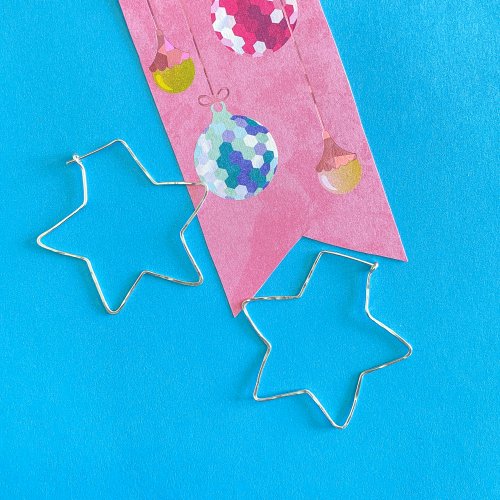
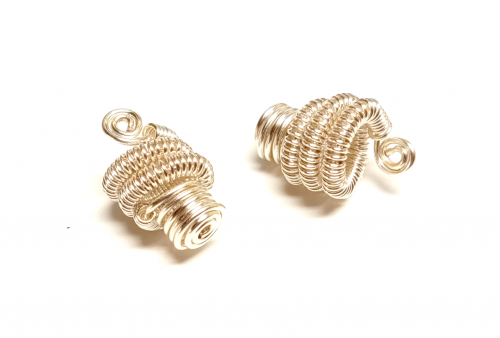
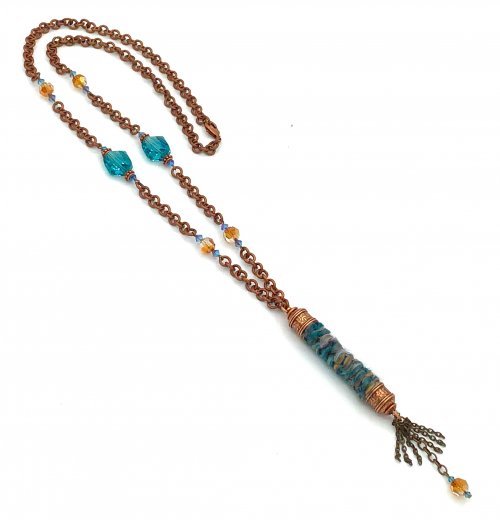

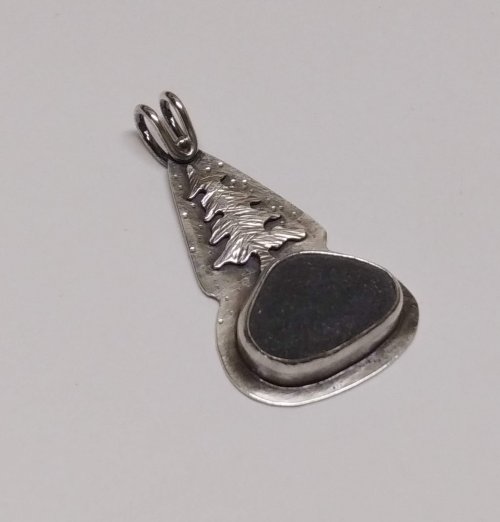
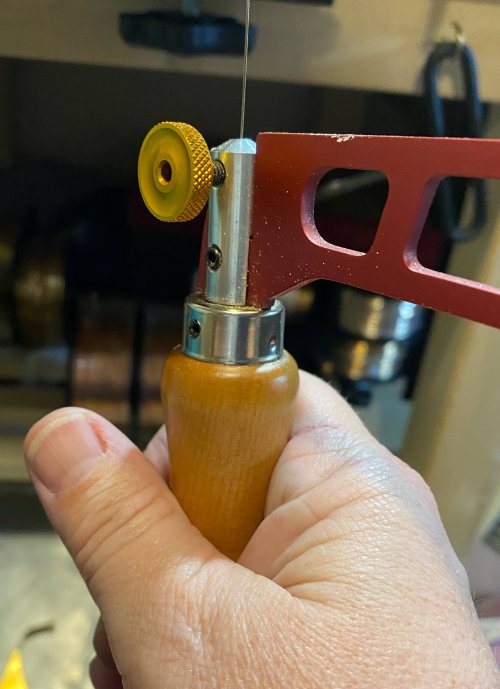
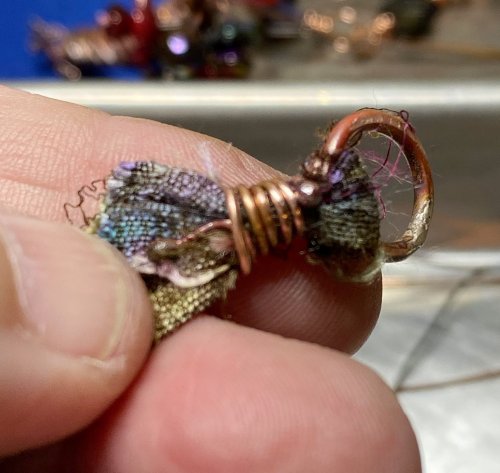
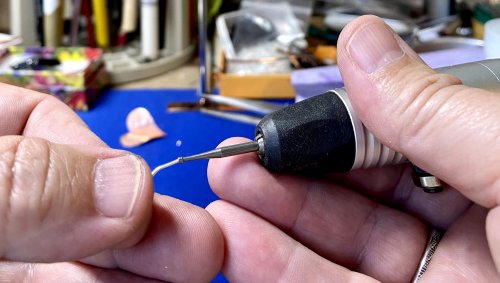
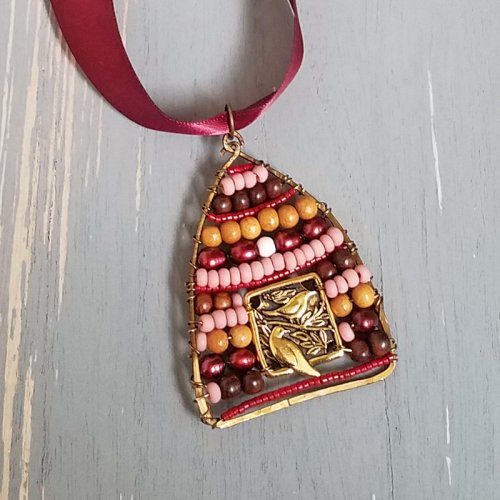
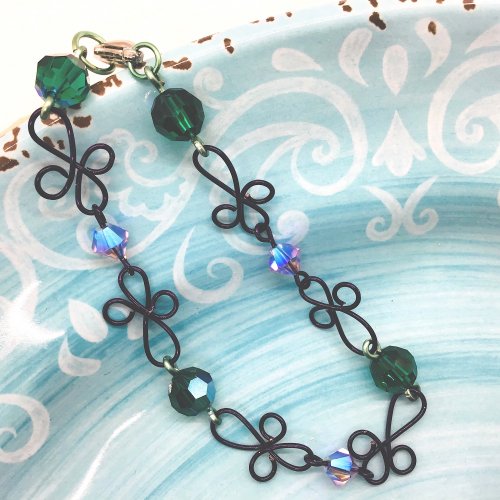



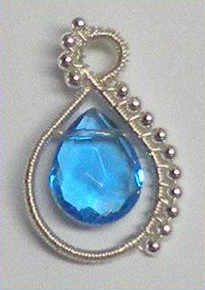 Beaded Briolette Pendant
Beaded Briolette Pendant
 Snail Trail Spiral Earrings
Snail Trail Spiral Earrings
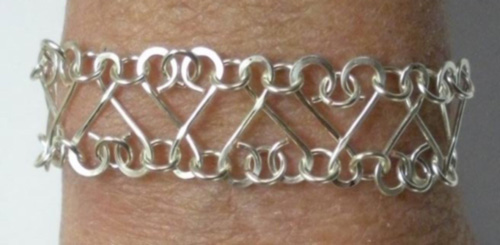 Heart Link Bracelet and Earrings
Heart Link Bracelet and Earrings
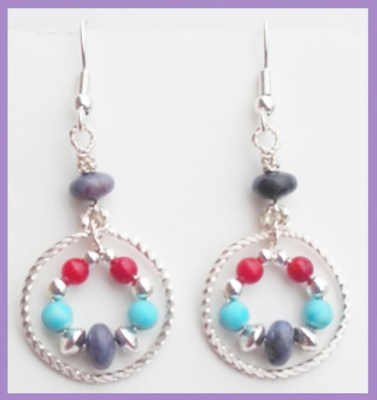 Crazy Hoop Earrings
Crazy Hoop Earrings
 Double Delight Jade Bracelet
Double Delight Jade Bracelet
 Swagged Pearl Pendant
Swagged Pearl Pendant
 Heart Earrings with Drops
Heart Earrings with Drops
 Scarab Bracelet
Scarab Bracelet
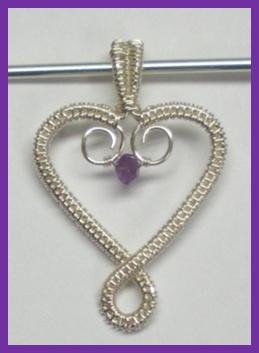 Birthstone Heart Pendant
Birthstone Heart Pendant
 Pearl of the Sea Woven Pendant
Pearl of the Sea Woven Pendant
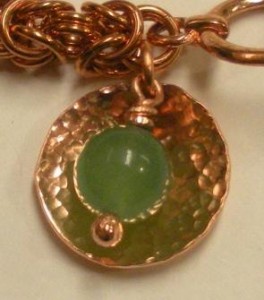 Bead Charm
Bead Charm
 Coiled Rosette Link
Coiled Rosette Link
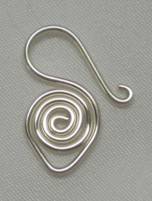 Wire Jewelry Component and Swan Hook
Wire Jewelry Component and Swan Hook
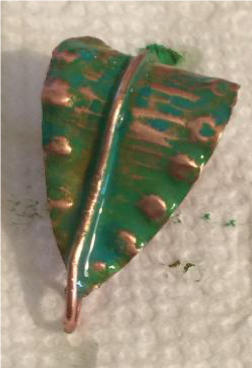 Leaf Bail
Leaf Bail
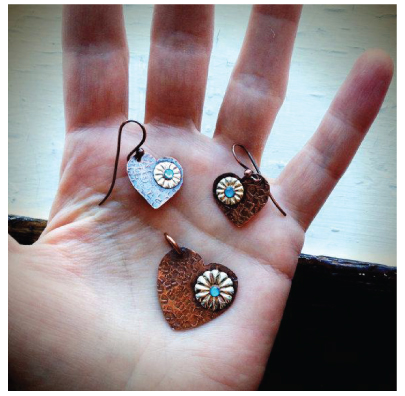 Component Templates with Heart Earrings and Pendant
Component Templates with Heart Earrings and Pendant
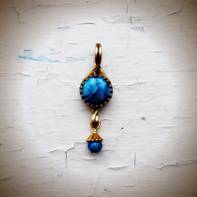 Ring Pendant
Ring Pendant
 Calla Lily Earrings
Calla Lily Earrings
 Birdhouse Pendant
Birdhouse Pendant
 Clamshell Earrings and Pendant
Clamshell Earrings and Pendant
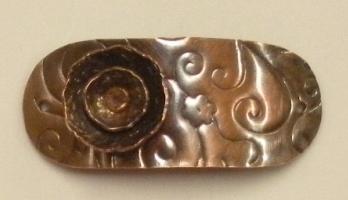 Bracelet Component
Bracelet Component
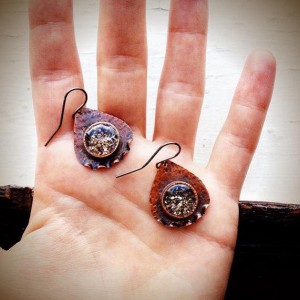 Teardrop Earrings and Pendant
Teardrop Earrings and Pendant
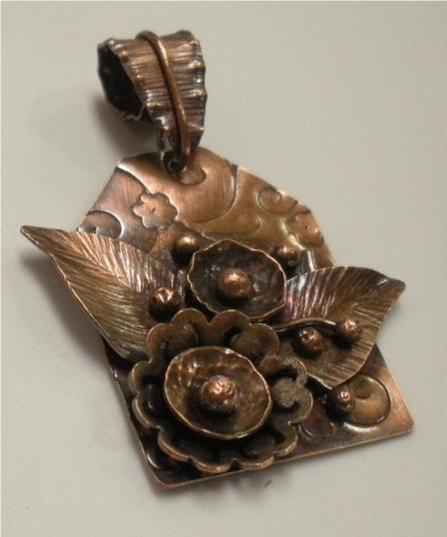 Tab Style Pendant
Tab Style Pendant
 Coiled End Caps
Coiled End Caps
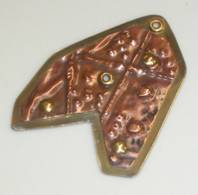 Freeform Pendant
Freeform Pendant
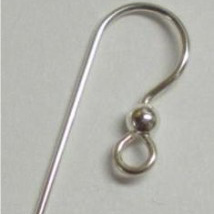 French Hook Ear Wires
French Hook Ear Wires
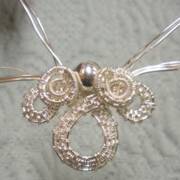 Necklace Component
Necklace Component
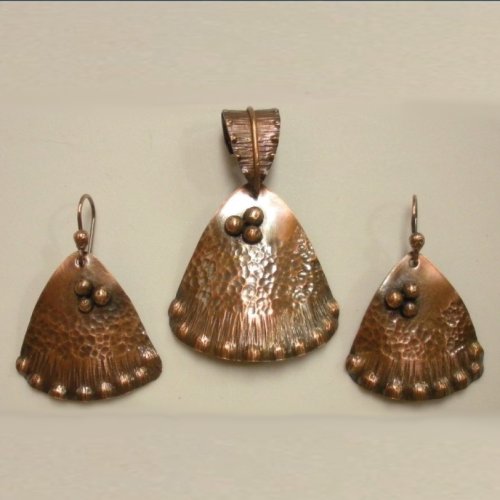 Triangle Shield Earrings, Pendant and Bail
Triangle Shield Earrings, Pendant and Bail
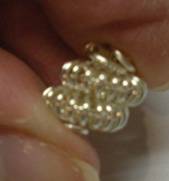 How to Make a Wire Coil and Bead
How to Make a Wire Coil and Bead
 Egyptian Coil Bracelet
Egyptian Coil Bracelet
 Focal Bead Egyptian Coiled Bracelet
Focal Bead Egyptian Coiled Bracelet
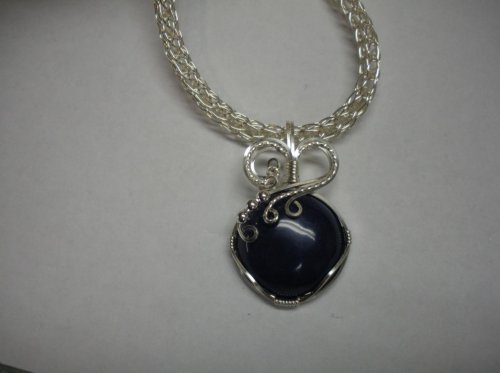 Sweetheart Round Cabochon Pendant
Sweetheart Round Cabochon Pendant
 Making Cobblestone Cabochons
Making Cobblestone Cabochons
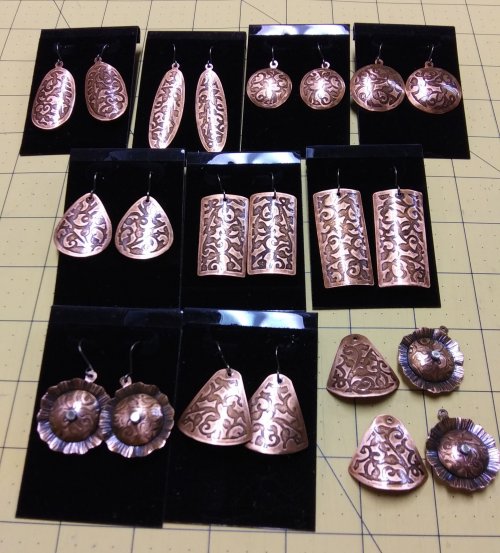 Cupcake Wrapper Earrings
Cupcake Wrapper Earrings
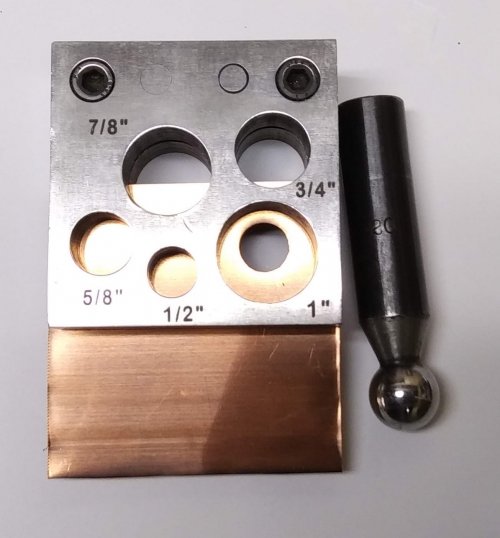 How to Make Metal Washers
How to Make Metal Washers
 Baseball Skin Keychain
Baseball Skin Keychain
 Pat's Silver Domed Earrings
Pat's Silver Domed Earrings
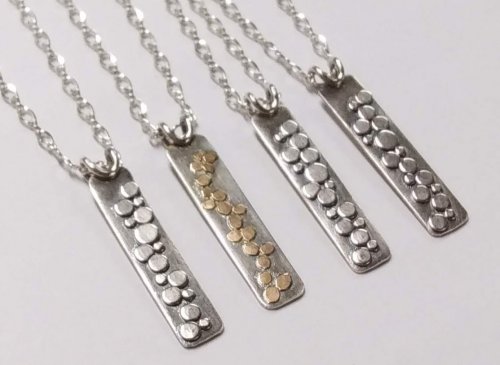 Blaze Your Own Path Pendant
Blaze Your Own Path Pendant
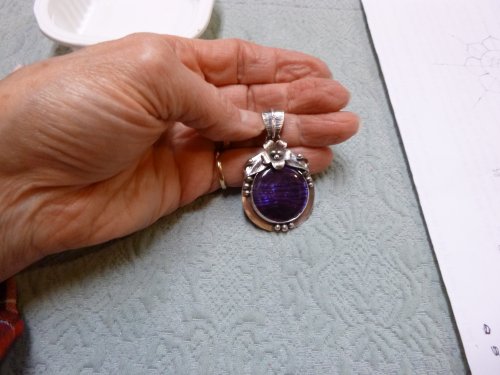 Semi Snap-on Bail
Semi Snap-on Bail
 Interlocking Faux Twist Wire Bracelet
Interlocking Faux Twist Wire Bracelet
 Fold Formed Cuff With Faux Roman Glass or Coin Cabochon
Fold Formed Cuff With Faux Roman Glass or Coin Cabochon
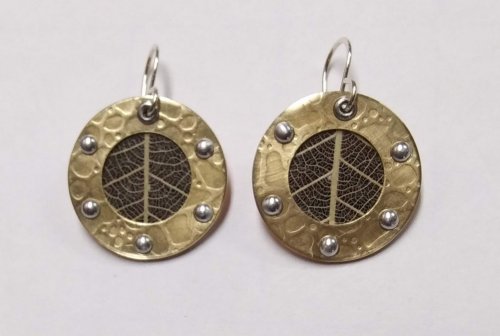 Steampunk Style Leaf Earrings
Steampunk Style Leaf Earrings
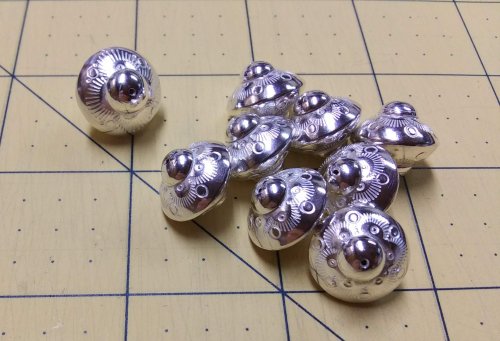 Stamped Saucer Beads
Stamped Saucer Beads
 Kat's Wire Hoop Earrings
Kat's Wire Hoop Earrings
 Simple Bail on a Coin Pendant
Simple Bail on a Coin Pendant
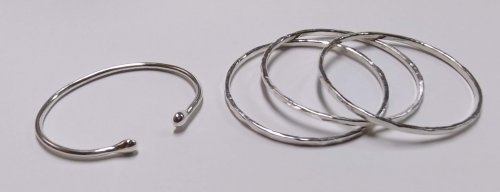 Wire Bangles
Wire Bangles
 Rolling Mill - or not - Cuff Bracelet
Rolling Mill - or not - Cuff Bracelet
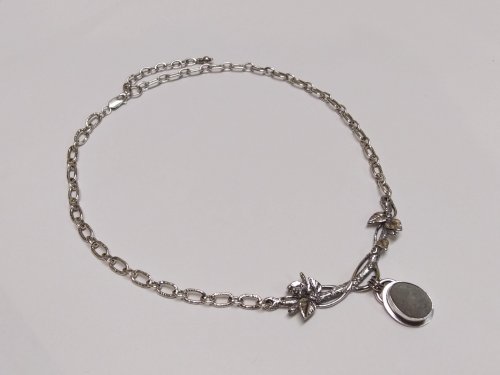 Jen's Chain
Jen's Chain
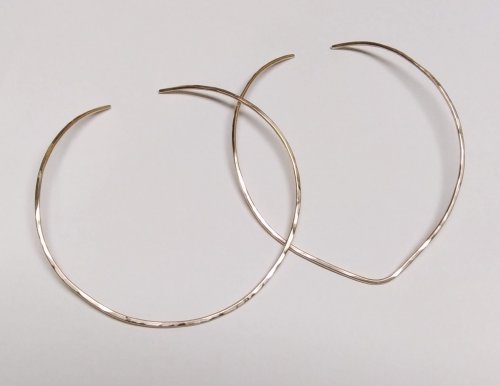 Making Neckwires
Making Neckwires
 Silver Scrap Wire Focals to Embellish
Silver Scrap Wire Focals to Embellish
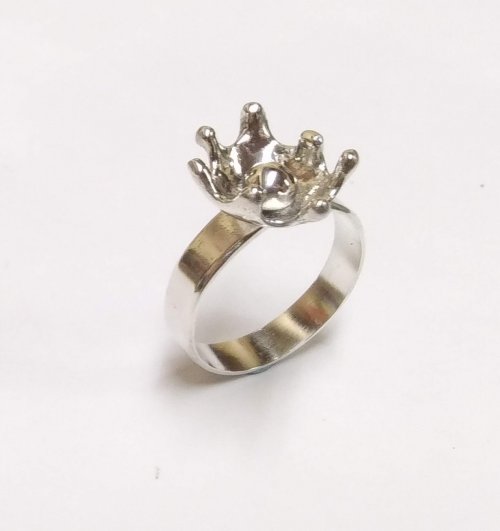 Splash Ring
Splash Ring
 Cobblestone Cab Earrings
Cobblestone Cab Earrings
 Multi Gemstone Necklace
Multi Gemstone Necklace
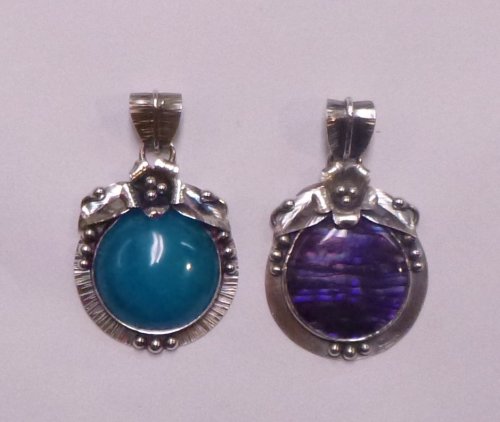 Southwest Style Pendant
Southwest Style Pendant
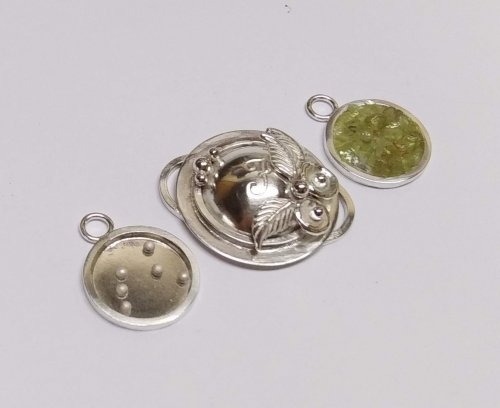 Bezels Using Square Wire
Bezels Using Square Wire
 Mixed Metal Sampler Bracelet 1
Mixed Metal Sampler Bracelet 1
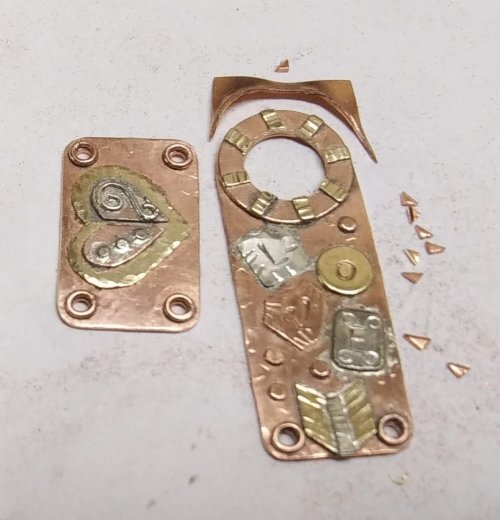 Mixed Metal Sampler Bracelet 2
Mixed Metal Sampler Bracelet 2
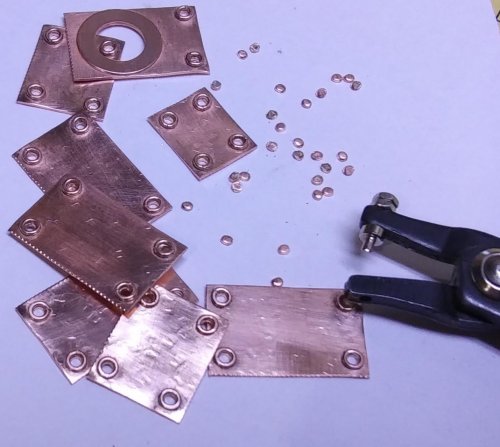 Mixed Metal Sampler Bracelet 3
Mixed Metal Sampler Bracelet 3
 Mixed Metal Sampler Bracelet 4 - Words Matter
Mixed Metal Sampler Bracelet 4 - Words Matter
 Mixed Metal Sampler Bracelet 5 - River Walk
Mixed Metal Sampler Bracelet 5 - River Walk
 Mixed Metal Sampler Bracelet 6 - A Little Bling
Mixed Metal Sampler Bracelet 6 - A Little Bling
 Mixed Metal Sampler Bracelets Series PUTTING IT ALL TOGETHER
Mixed Metal Sampler Bracelets Series PUTTING IT ALL TOGETHER
 Mixed Metal Sampler Bracelet 7 - Steampunk Space Oddity
Mixed Metal Sampler Bracelet 7 - Steampunk Space Oddity
 Mixed Metal Sampler Bracelet 8 - Fun Shapes
Mixed Metal Sampler Bracelet 8 - Fun Shapes
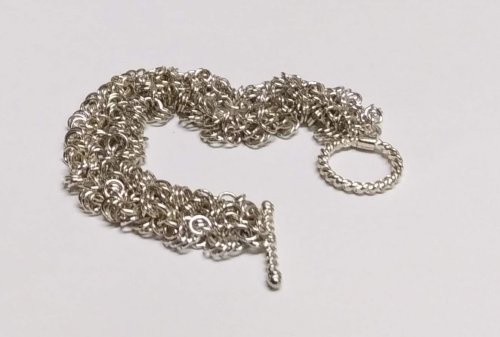 Jump Ring Fringe Bracelet
Jump Ring Fringe Bracelet
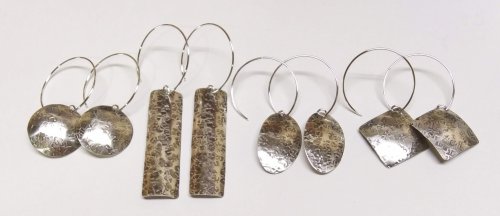 Easy Artisan Earrings
Easy Artisan Earrings
 Making Chain with Wubbers and Wire
Making Chain with Wubbers and Wire
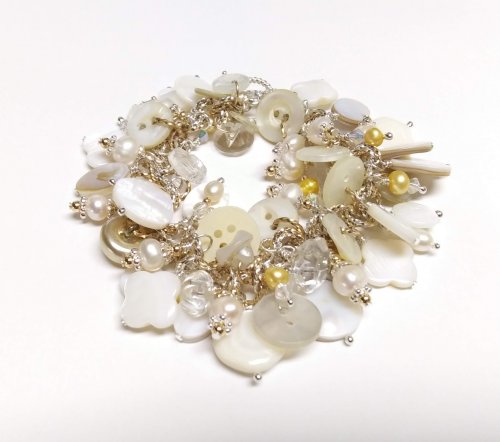 Heirloom Buttons and Beads Bracelet
Heirloom Buttons and Beads Bracelet
 Tiny Silver Charms part 1
Tiny Silver Charms part 1
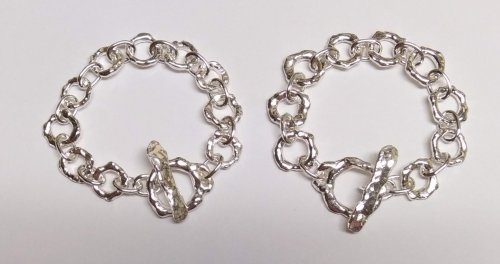 Argentium Silver Scrap Chain
Argentium Silver Scrap Chain
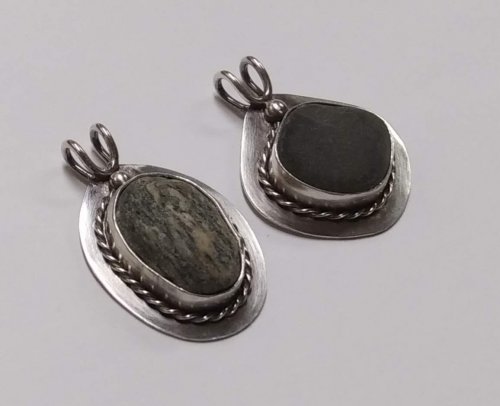 Sterling Lake Stone Pendant with Twisted Wire
Sterling Lake Stone Pendant with Twisted Wire
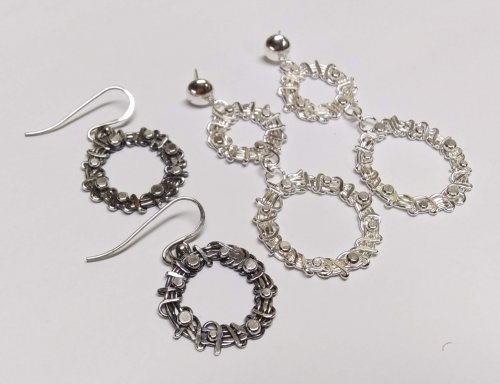 Smashing Drop Earrings
Smashing Drop Earrings
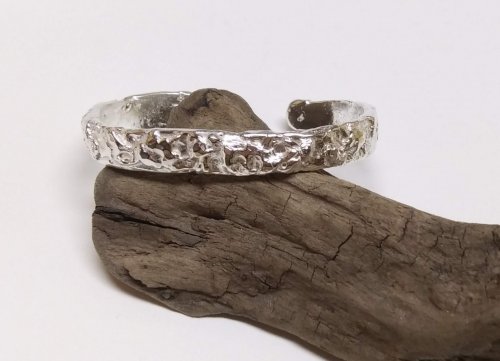 Argentium Silver Scrap Nugget Cuff
Argentium Silver Scrap Nugget Cuff
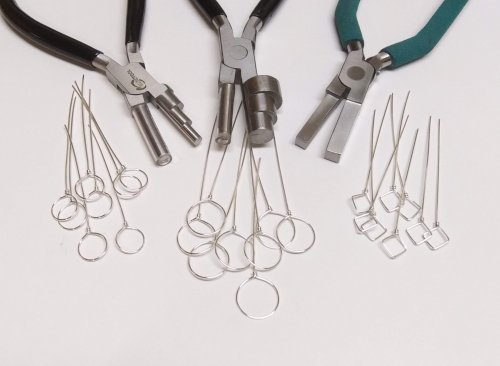 Finish Them Your Way Earrings
Finish Them Your Way Earrings
 Paddle Fringe Earrings
Paddle Fringe Earrings
 Seed Bead Earrings
Seed Bead Earrings
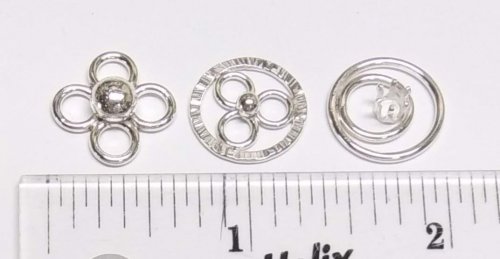 Bracelet Links 1, 2,3
Bracelet Links 1, 2,3
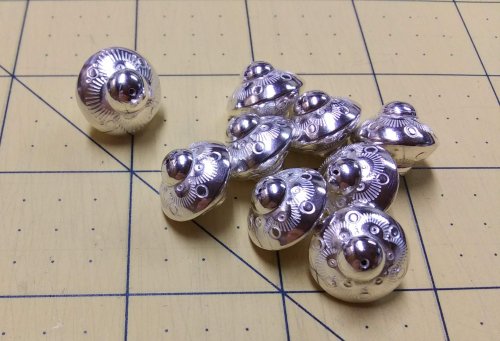 Stamped Saucer Beads
Stamped Saucer Beads
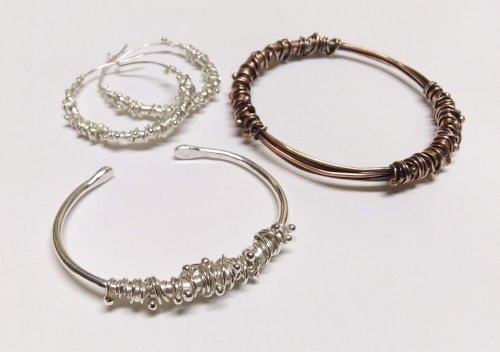 Chaos Scrap Wrap Jewelry
Chaos Scrap Wrap Jewelry
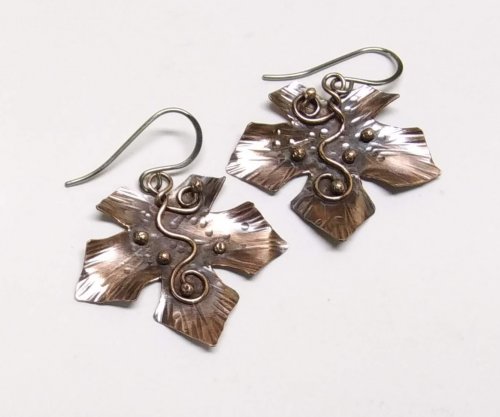 Maple Leaf Earrings
Maple Leaf Earrings
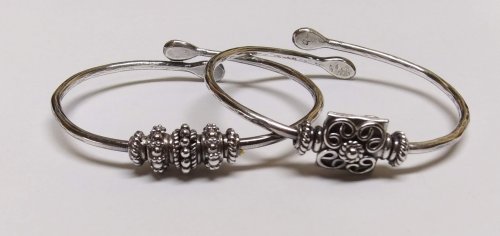 Child's Bracelet That Grows with Them
Child's Bracelet That Grows with Them
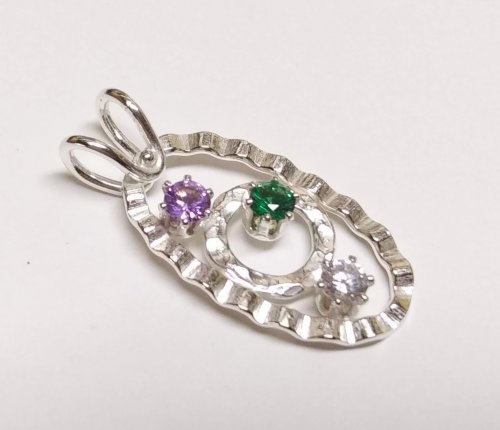 Mike's Surpirise Claire's Ripple Pendant
Mike's Surpirise Claire's Ripple Pendant
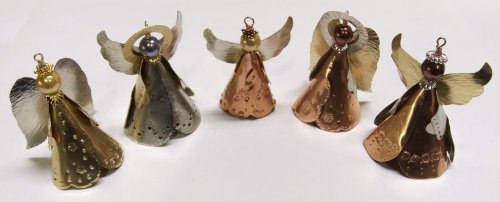 Angel Ornament
Angel Ornament
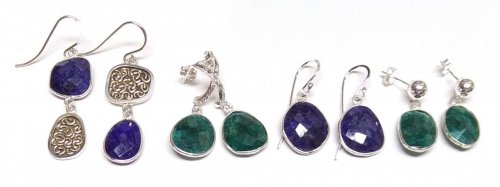 Diamonds, Emeralds, and Sapphires, Oh My.
Diamonds, Emeralds, and Sapphires, Oh My.
 Treasure Bezel Cups
Treasure Bezel Cups
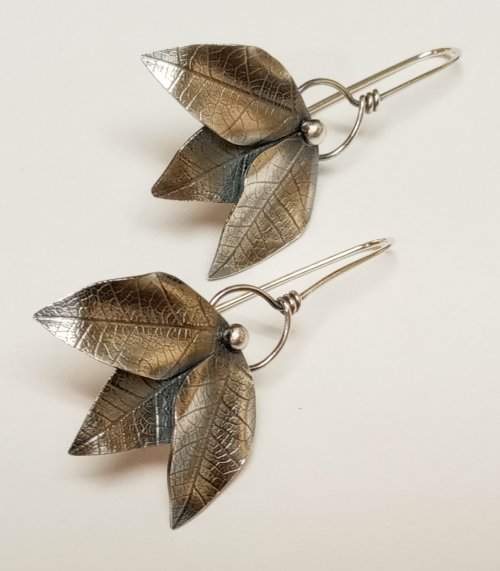 Three Leaves Earrings
Three Leaves Earrings
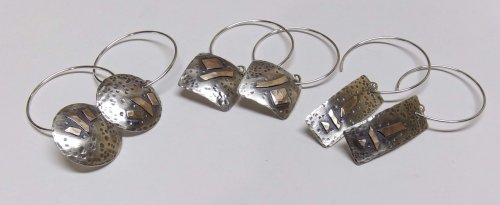 Silver and Gold Earrings
Silver and Gold Earrings
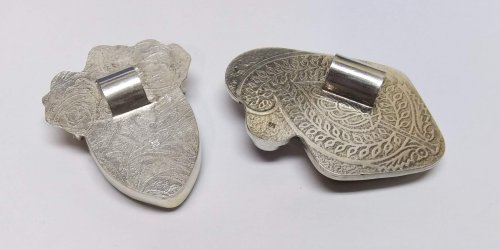 Make a Hidden Bail
Make a Hidden Bail
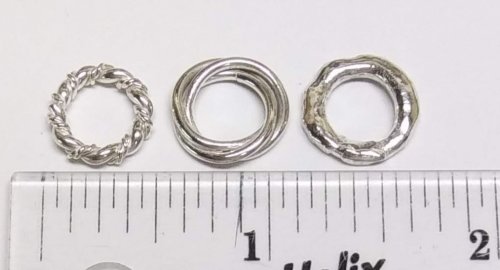 Wire Links 4, 5, 6
Wire Links 4, 5, 6
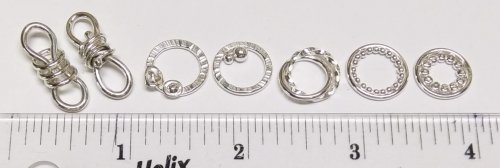 Wire Links 7, 8, 9, and 10
Wire Links 7, 8, 9, and 10
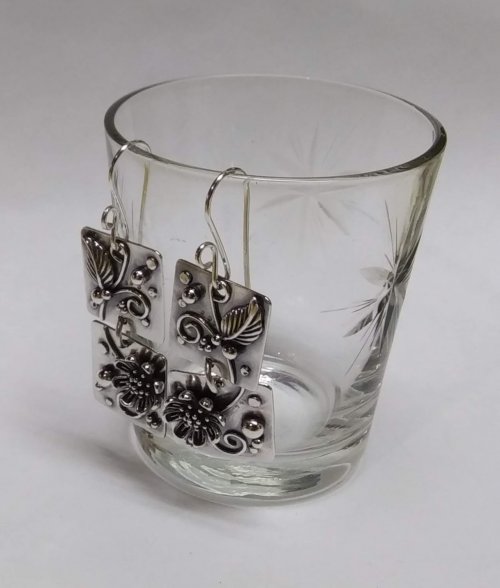 Double Loop Ear Wires
Double Loop Ear Wires
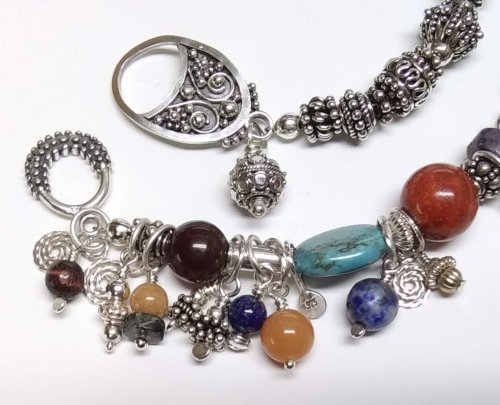 Balled and Paddled Head Pins
Balled and Paddled Head Pins
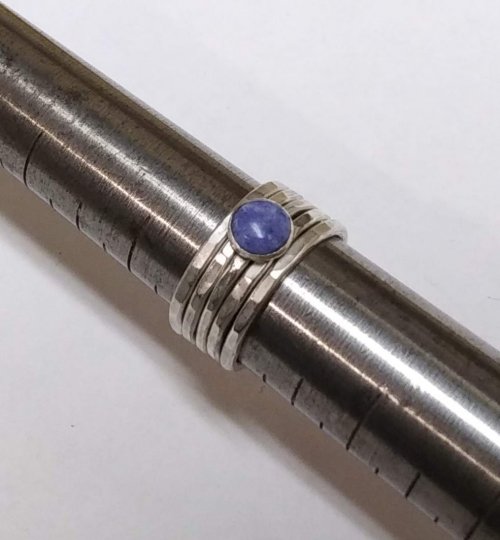 Textured Stacked Rings
Textured Stacked Rings
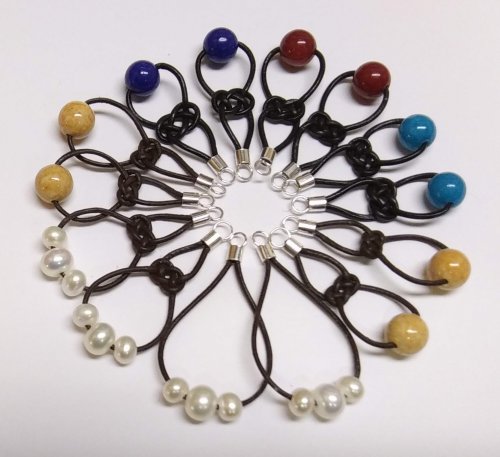 Cord and Bead Earrings
Cord and Bead Earrings
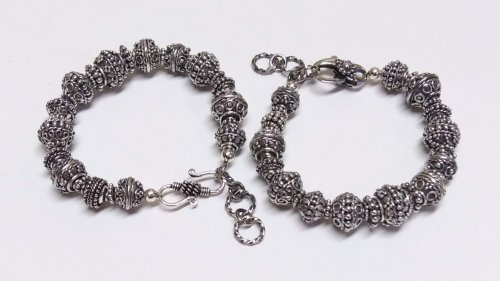 Bali Style Adjustable Closures
Bali Style Adjustable Closures
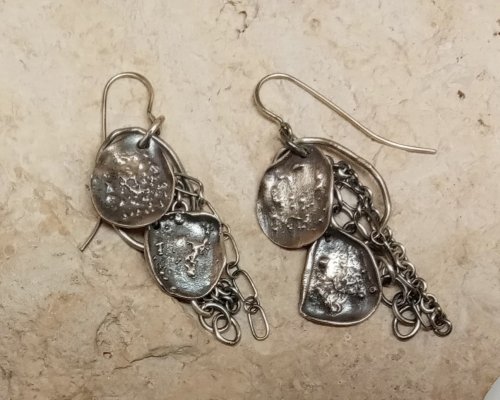 Organic Fused Silver Dust Earrings
Organic Fused Silver Dust Earrings
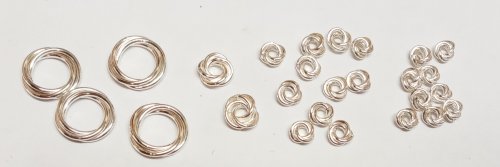 Mobius Rings
Mobius Rings
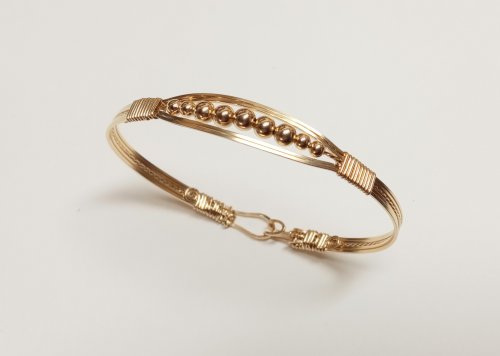 Dainty Bead and Wire Bangle with Hook Closure
Dainty Bead and Wire Bangle with Hook Closure
 Seed Bead and Nugget Necklace
Seed Bead and Nugget Necklace
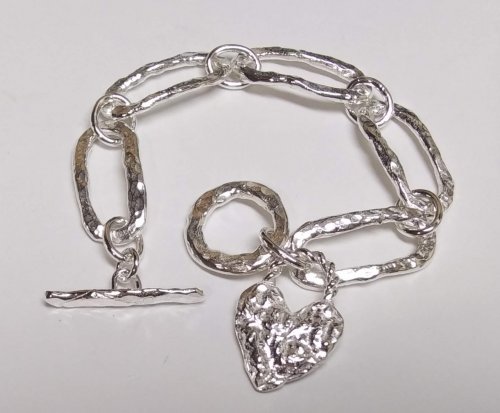 Love Locks Heart Charm
Love Locks Heart Charm
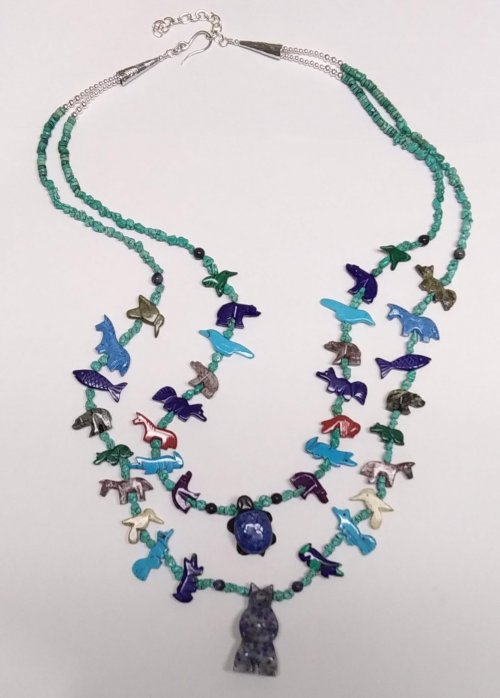 Traditional Southwest Style Hook Closures
Traditional Southwest Style Hook Closures
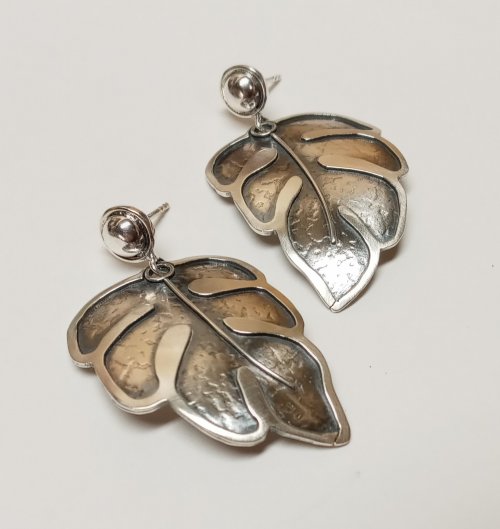 Negative Space Earrings
Negative Space Earrings
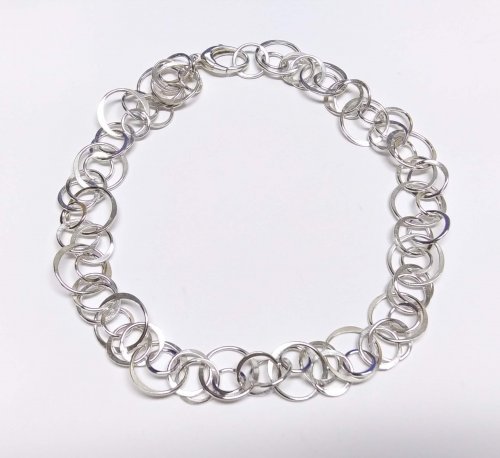 Jumbled Lacy Chain
Jumbled Lacy Chain
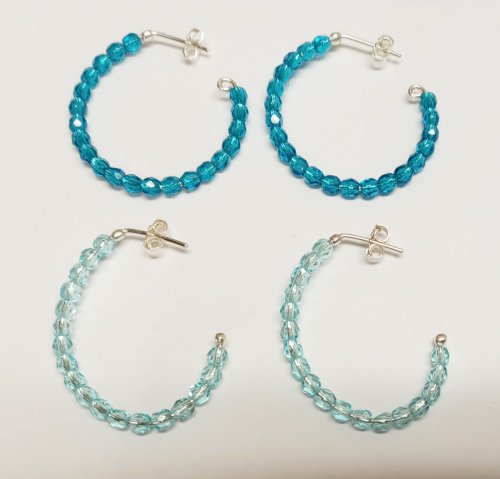 Easy Beaded Post Hoop Earrings
Easy Beaded Post Hoop Earrings
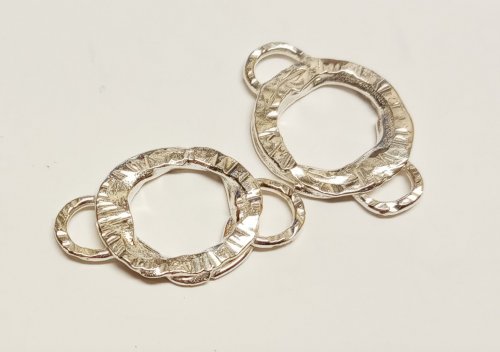 Rustic Silver Links
Rustic Silver Links
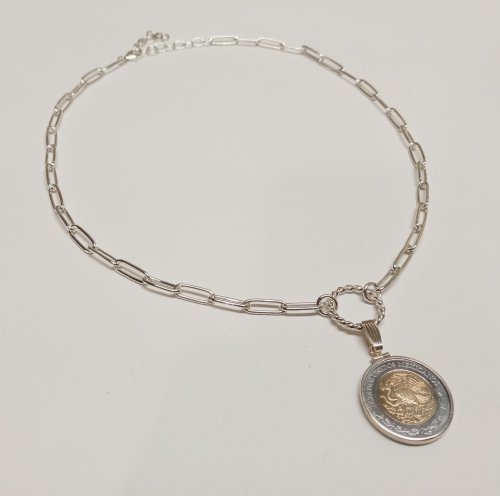 Make a Soldered Paperclip Chain
Make a Soldered Paperclip Chain
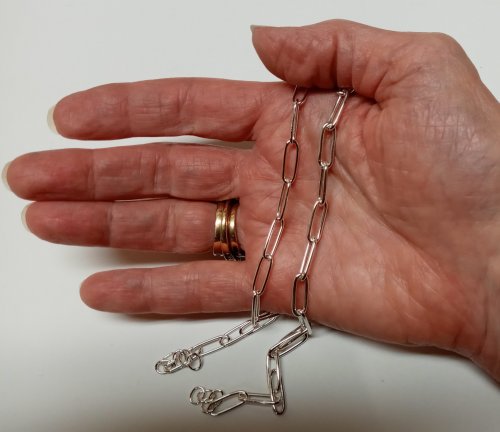 Make a Fused Paperclip Chain
Make a Fused Paperclip Chain
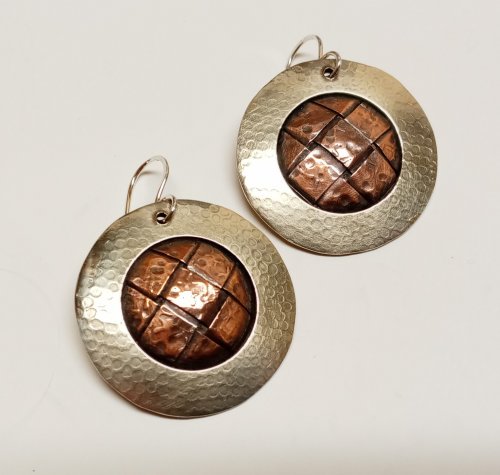 Make Woven Metal Strips to Use in Your Designs
Make Woven Metal Strips to Use in Your Designs
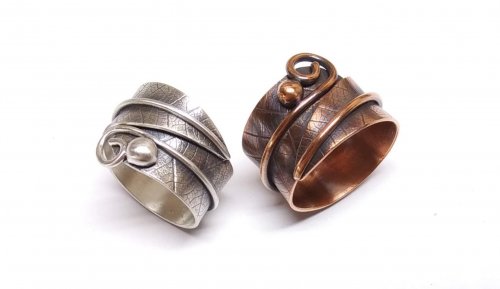 Leaf Wrap Metal Rings version 1
Leaf Wrap Metal Rings version 1
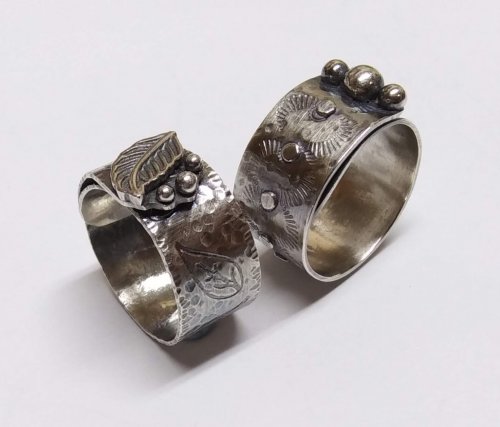 Leaf Wrap Metal Rings version 2
Leaf Wrap Metal Rings version 2
 Snowflake Ornaments
Snowflake Ornaments
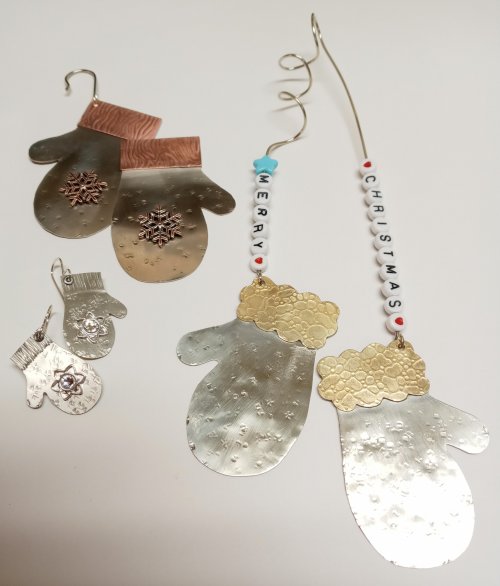 Mitten Ornament
Mitten Ornament
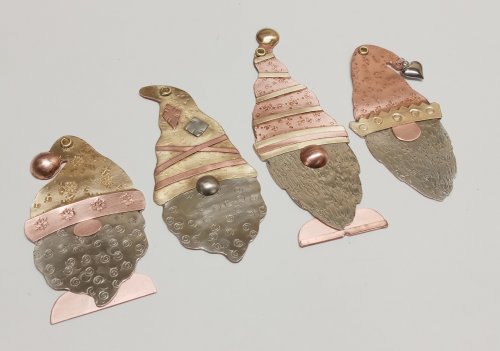 Gnome Ornaments
Gnome Ornaments
 A Partridge in a Pear Tree Earrings
A Partridge in a Pear Tree Earrings
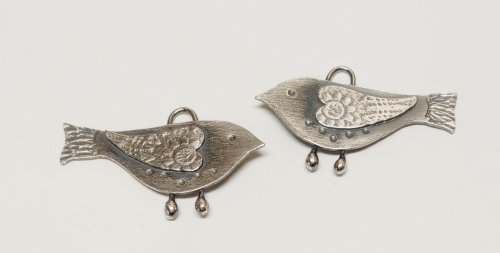 Two Turtle Doves Earrings
Two Turtle Doves Earrings
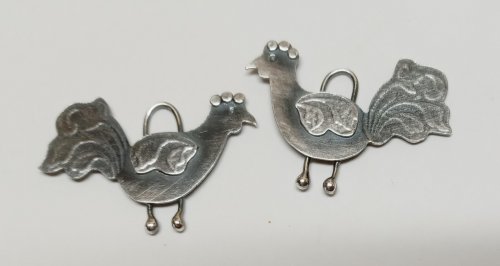 Three French Hens Earrings
Three French Hens Earrings
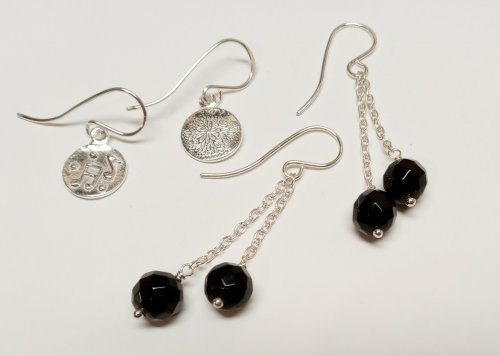 Four Calling Birds Earrings
Four Calling Birds Earrings
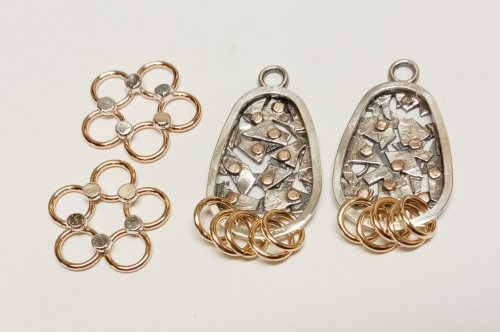 Five Golden Rings Earrings
Five Golden Rings Earrings
 Six Geese a Layin' Earrings
Six Geese a Layin' Earrings
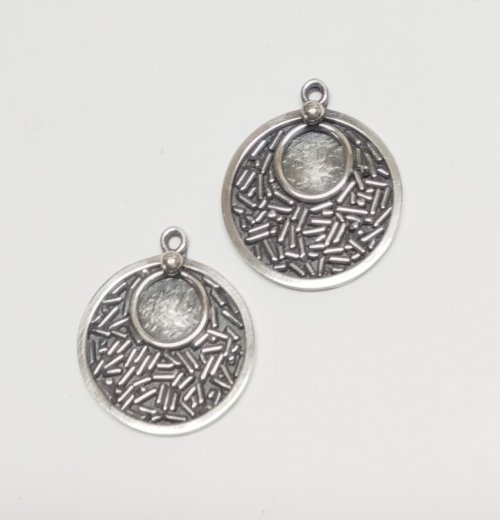 Seven Swans a Swimming Earrings
Seven Swans a Swimming Earrings
 Eight Maids a Milking earrings
Eight Maids a Milking earrings
 Nine Ladies Dancing Earrings
Nine Ladies Dancing Earrings
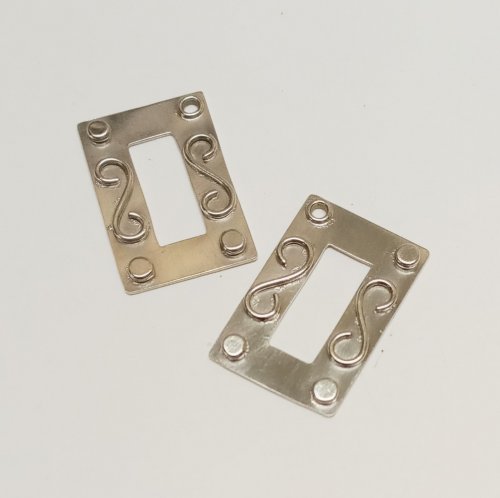 Ten Lords a Leaping Earrings
Ten Lords a Leaping Earrings
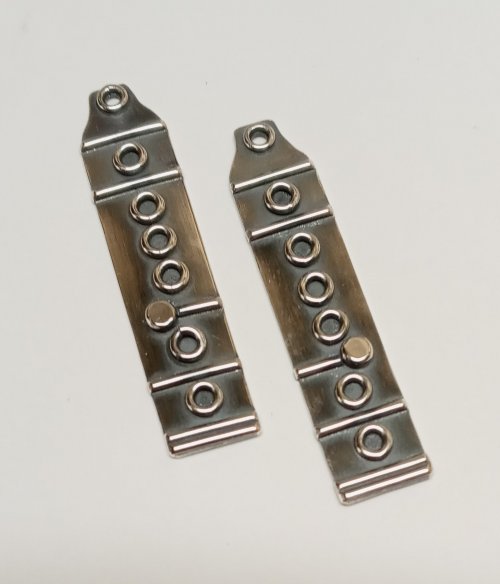 Eleven Pipers Piping Earrings
Eleven Pipers Piping Earrings
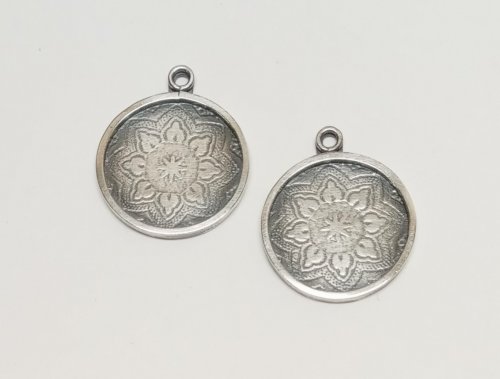 Twelve Drummers Drumming Earrings
Twelve Drummers Drumming Earrings
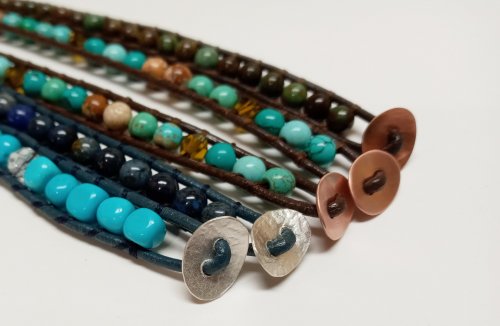 Make Your Own Bracelet Button Clasps
Make Your Own Bracelet Button Clasps
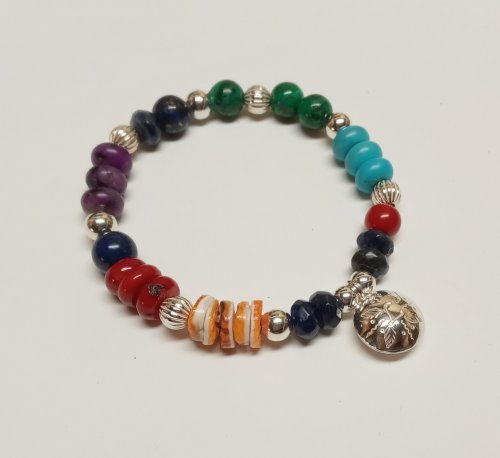 Little Saucer Bells
Little Saucer Bells
 Doodads - Fun Findings
Doodads - Fun Findings
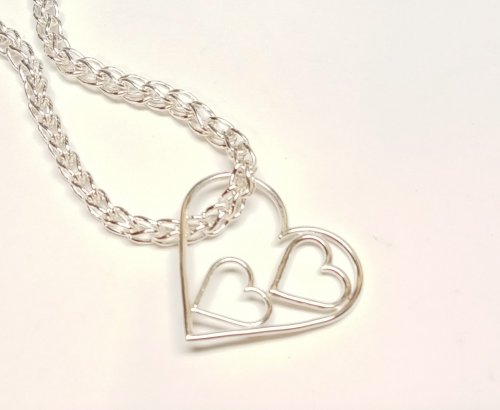 No Measure Hearts, Any Size, Any Gauge
No Measure Hearts, Any Size, Any Gauge
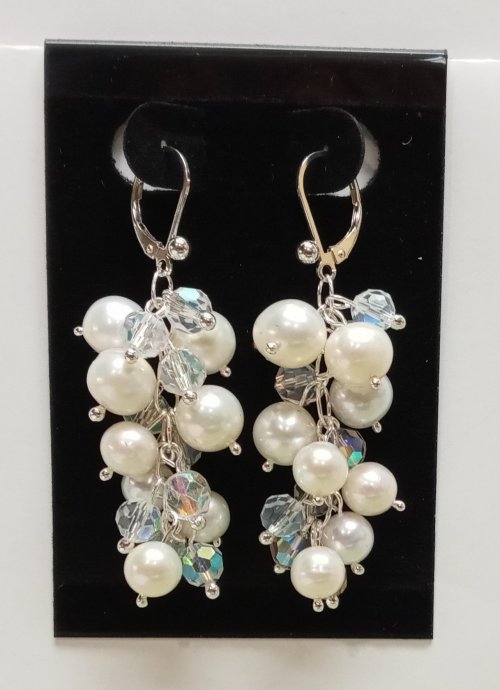 Cascading Drops Earrings
Cascading Drops Earrings
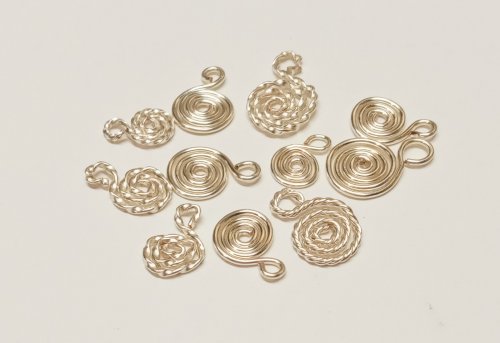 WIre Basics - Spiral Charms
WIre Basics - Spiral Charms
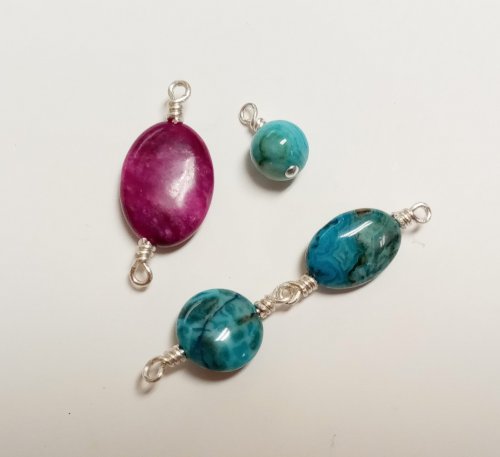 Wire Basics - Wrapped Loops and Links
Wire Basics - Wrapped Loops and Links
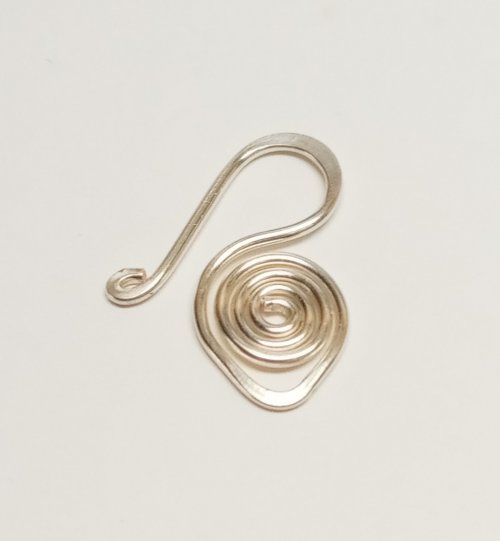 Wire Basics - Simple Swan Hook
Wire Basics - Simple Swan Hook
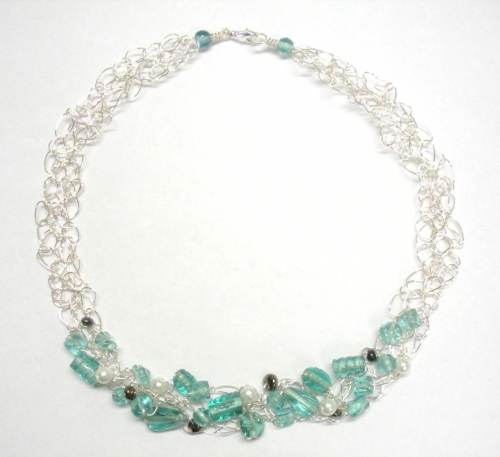 Wire Crocheted Necklace
Wire Crocheted Necklace
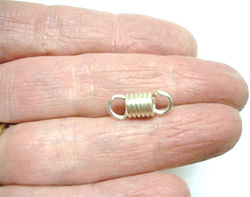 Wire Basics - Wire Garage Door Spring Link
Wire Basics - Wire Garage Door Spring Link
 Easy Post Hoop Earrings
Easy Post Hoop Earrings
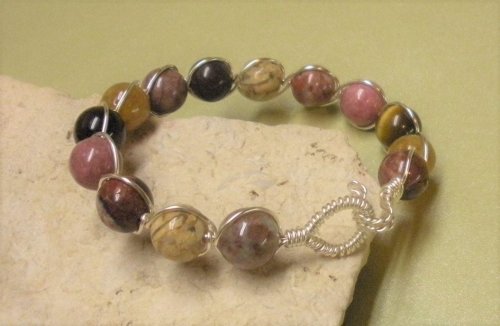 Double Wrap Wire Bangle Bracelet
Double Wrap Wire Bangle Bracelet
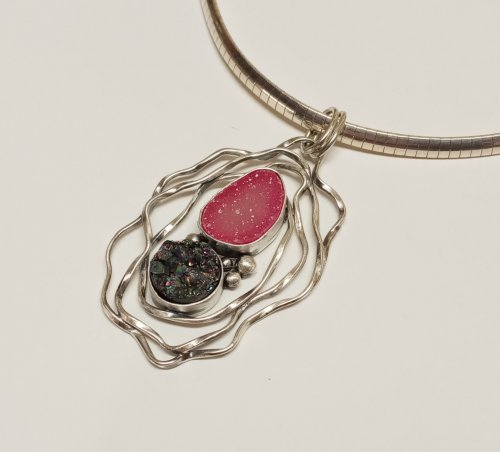 Organic Wire Pendant
Organic Wire Pendant
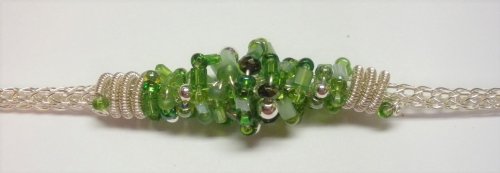 Coiled, Beaded Slide
Coiled, Beaded Slide
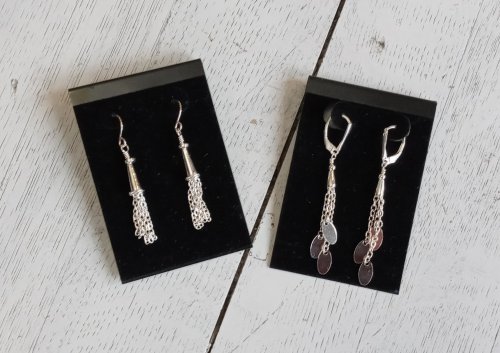 Cone and Chain Earrings
Cone and Chain Earrings
 Embellished Sterling Cones
Embellished Sterling Cones
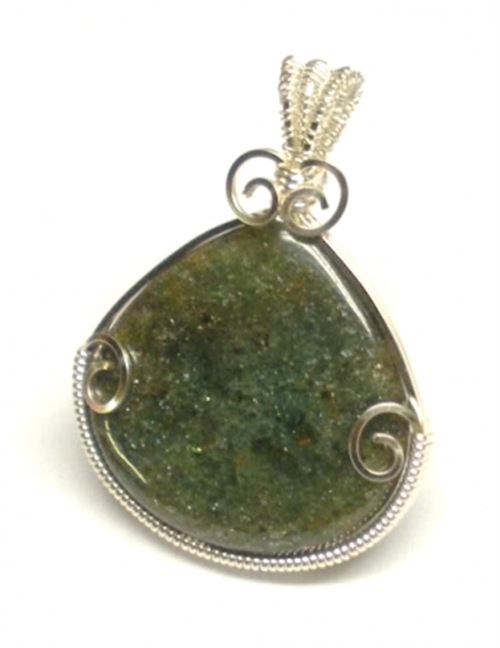 Classic Wire Wrap Bezelled Pendant
Classic Wire Wrap Bezelled Pendant
 Wire Wrap a Coin
Wire Wrap a Coin
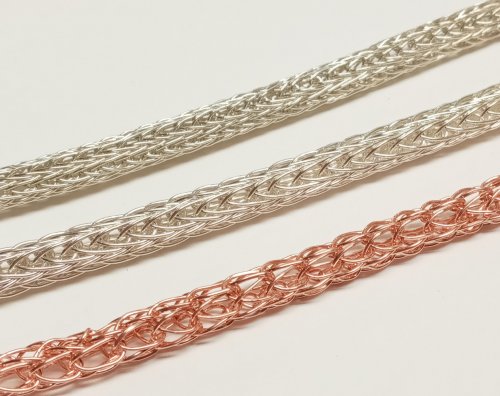 Viking Knit
Viking Knit
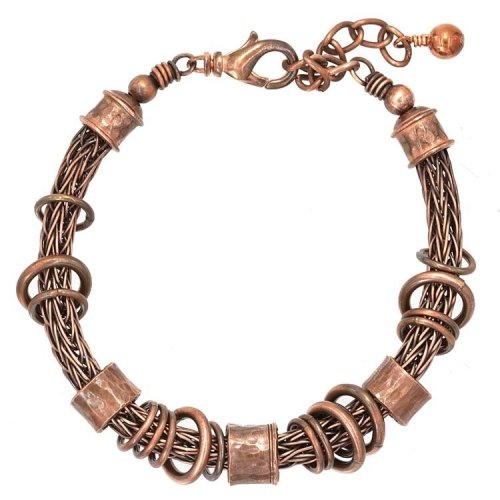 Viking Knit Bracelet
Viking Knit Bracelet
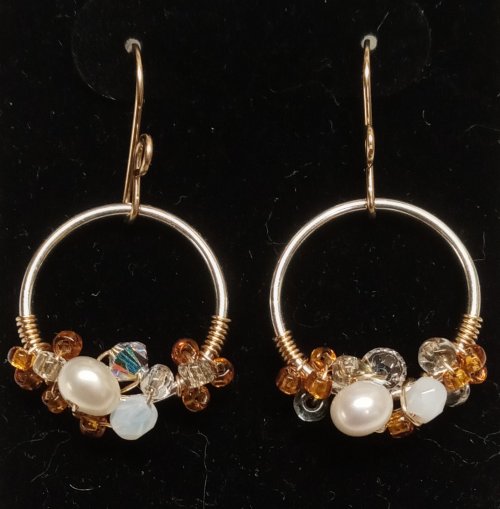 Bead-Wrapped Hoop Earrings
Bead-Wrapped Hoop Earrings
 Copper Feather Earrings
Copper Feather Earrings
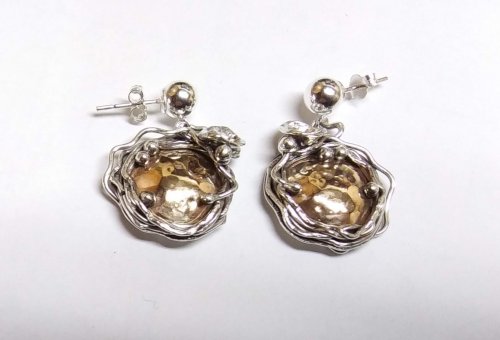 Soldering a Dome to a Backplate
Soldering a Dome to a Backplate
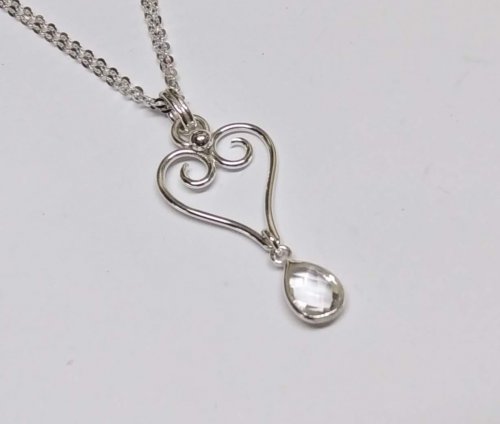 Wire Heart Pendant with Gemstone Drop
Wire Heart Pendant with Gemstone Drop
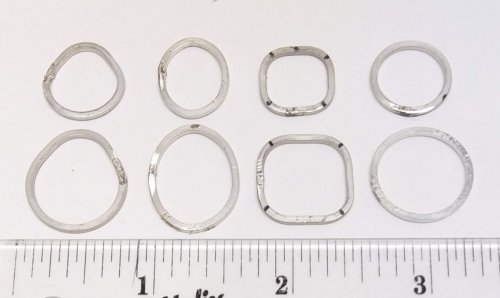 Make Basic Wire Shapes for Jewelry
Make Basic Wire Shapes for Jewelry
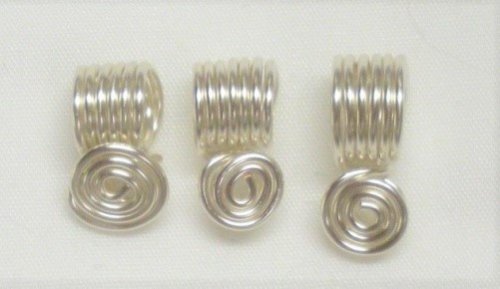 Make Simple Wire Slide Bails
Make Simple Wire Slide Bails
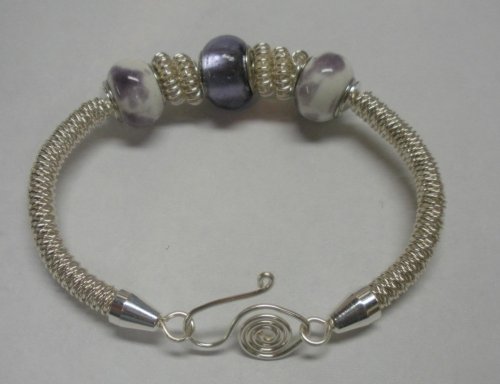 Coiled Bead and Twisted Wire Bracelet
Coiled Bead and Twisted Wire Bracelet
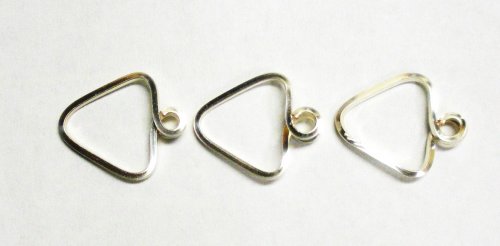 Wire Triangle Link
Wire Triangle Link
 Bali Style Focal Toggle
Bali Style Focal Toggle
 Silver Nuggets
Silver Nuggets
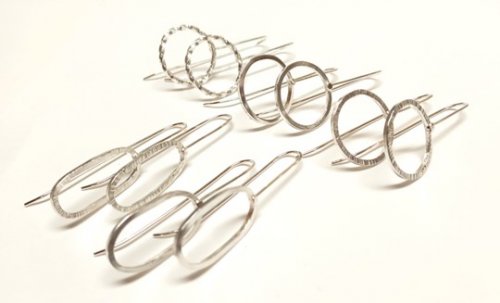 Fun Shapes Fish Hook Earrings
Fun Shapes Fish Hook Earrings
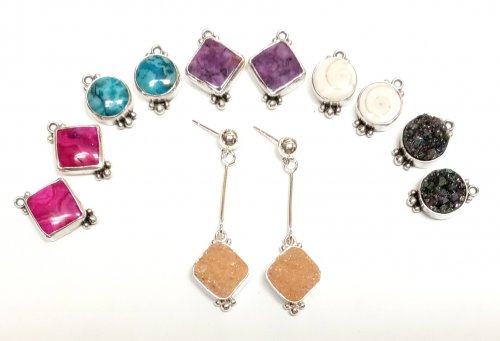 Dangling Drop Earrings
Dangling Drop Earrings
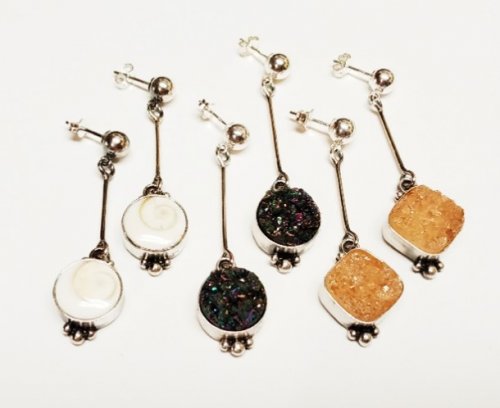 Dangling Chain Sticks
Dangling Chain Sticks
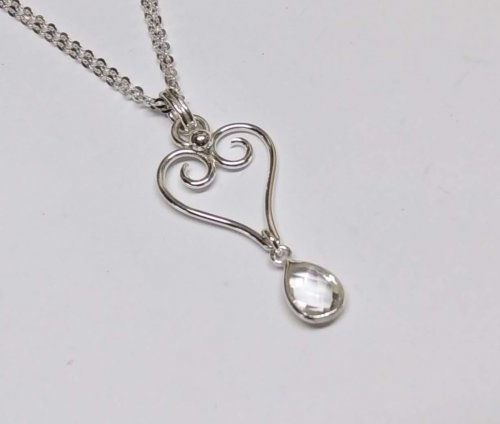 Wire Heart Pendant with Gemstone Drop
Wire Heart Pendant with Gemstone Drop
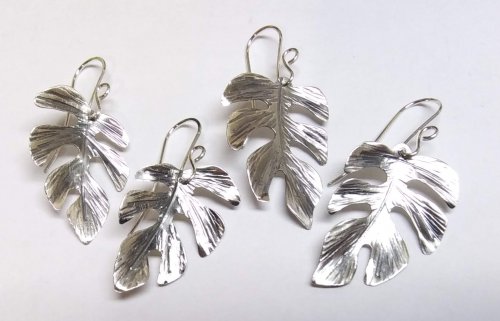 Tropical Leaf Earrings
Tropical Leaf Earrings
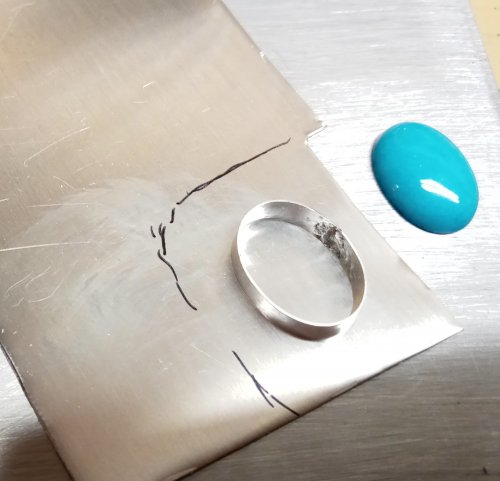 Basic Bezel Wire Tutorial
Basic Bezel Wire Tutorial
 Dog Tag Style Necklace
Dog Tag Style Necklace
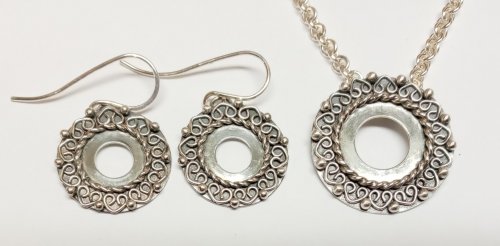 Lacy Washers
Lacy Washers
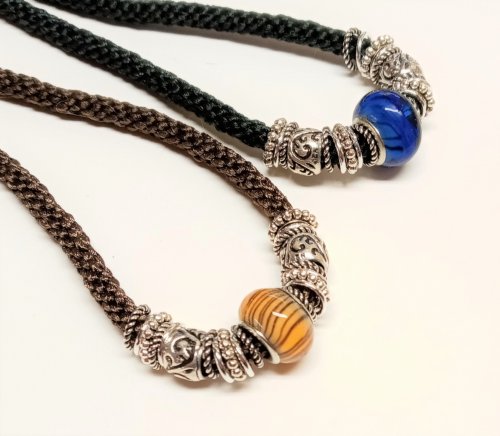 8-Strand Kumihimo
8-Strand Kumihimo
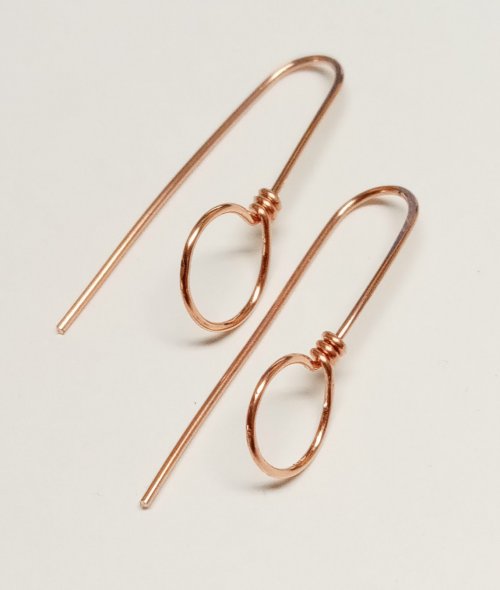 Closed Loop Ear Wires
Closed Loop Ear Wires
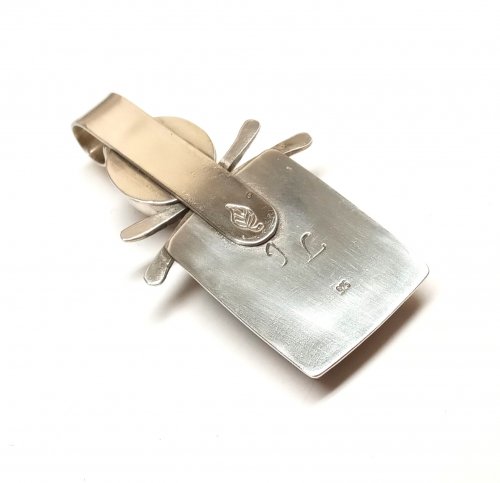 Simple Strip Bails from Scratch
Simple Strip Bails from Scratch
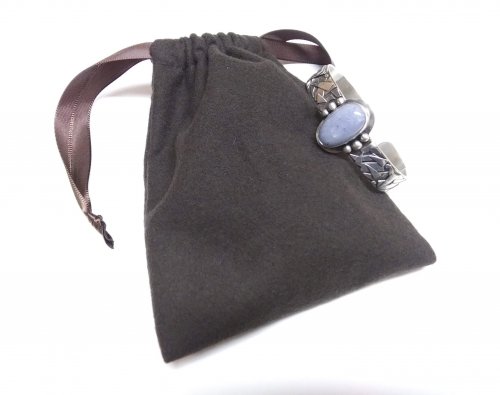 Anti-tarnish Silver Cloth Bags
Anti-tarnish Silver Cloth Bags
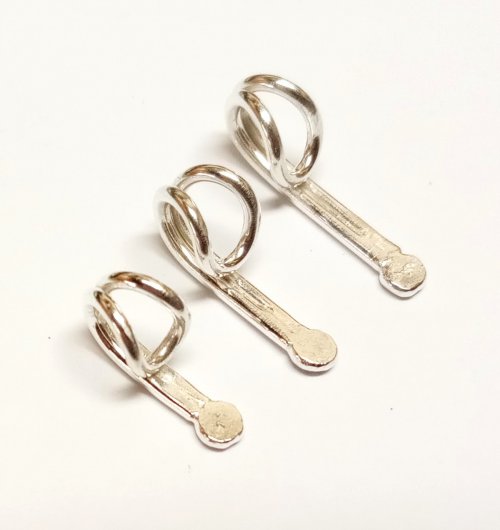 Cotter Pin Style Bail
Cotter Pin Style Bail
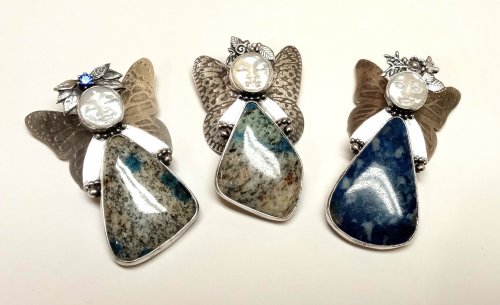 Holiday Woodland Fairy Ornament
Holiday Woodland Fairy Ornament
 Happy Holly Days Wreath Ornament
Happy Holly Days Wreath Ornament
 Happy Holly Days Leaves and Berries
Happy Holly Days Leaves and Berries
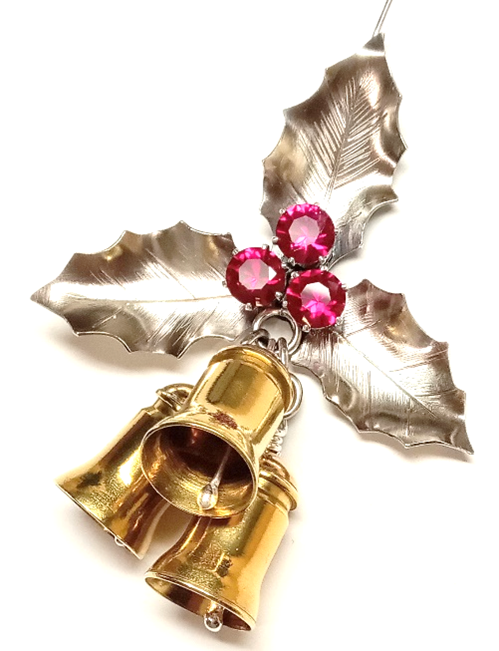 Happy Holly Days Bells Ornament
Happy Holly Days Bells Ornament
 Art Deco Wire Wrapped Pendant
Art Deco Wire Wrapped Pendant
 Twisted Wire Jump Rings
Twisted Wire Jump Rings
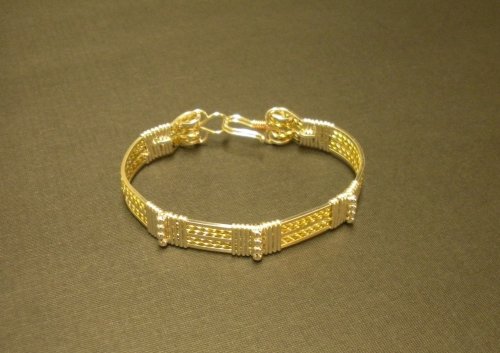 Two-tone Beaded Bangle
Two-tone Beaded Bangle
 Sweetheart Pendant
Sweetheart Pendant
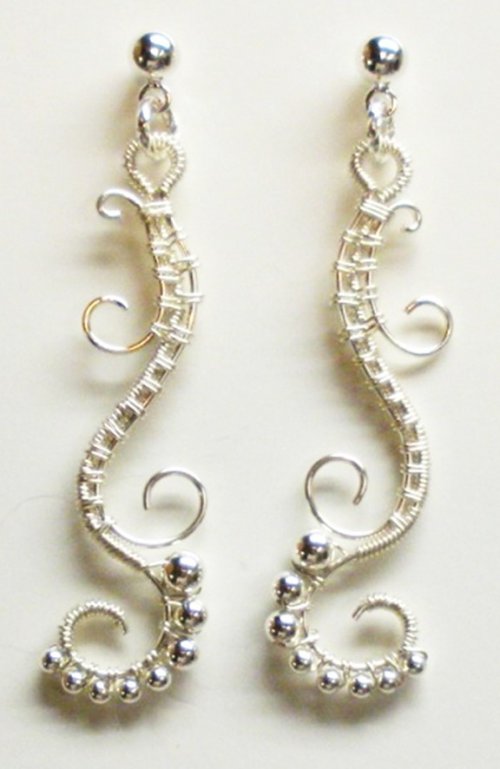 Waves on the Beach Earrings
Waves on the Beach Earrings
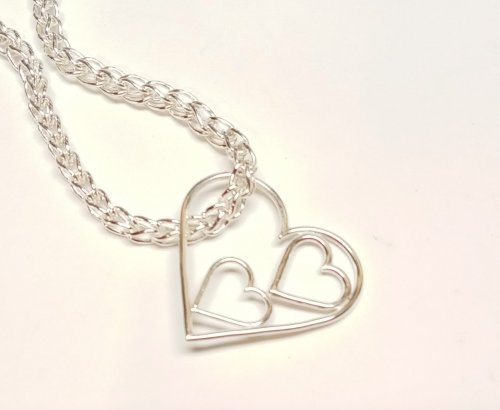 Any Size Wire Hearts - Any Size, Any Gauge
Any Size Wire Hearts - Any Size, Any Gauge
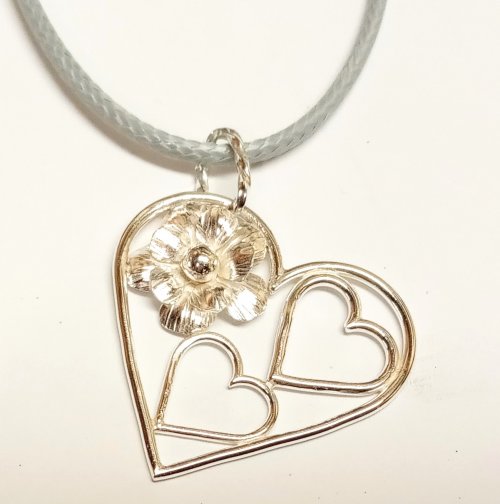 Just in Case Heart Pendant
Just in Case Heart Pendant
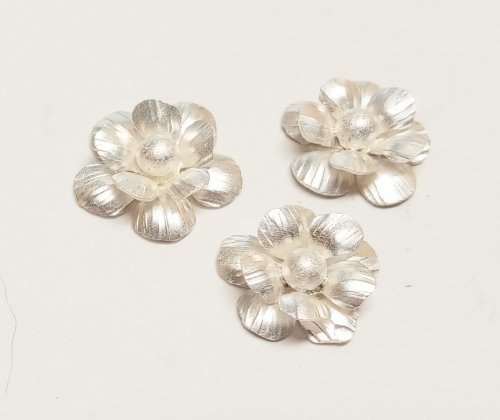 Small Flower Embellishment
Small Flower Embellishment
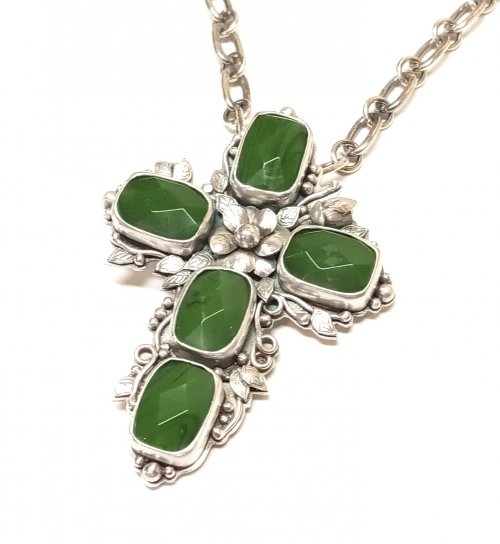 Making Tiny Dapped Metal Leaves
Making Tiny Dapped Metal Leaves
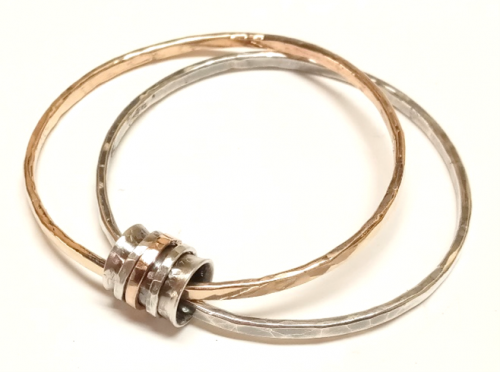 Spinner Fidget Bangles
Spinner Fidget Bangles
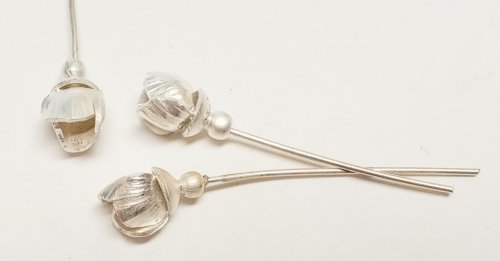 Small Flower Bud Embellishment
Small Flower Bud Embellishment
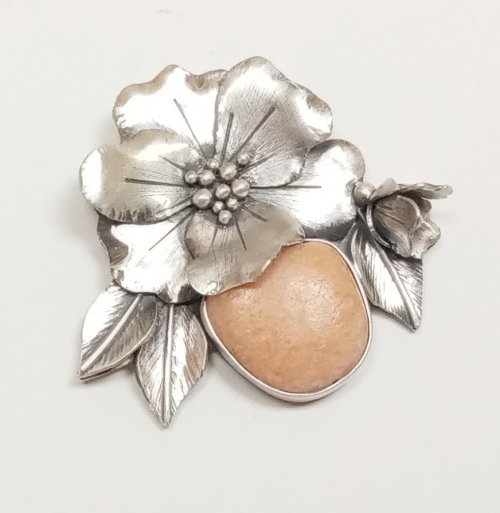 Three Petal Bud and Layered Embellishment
Three Petal Bud and Layered Embellishment
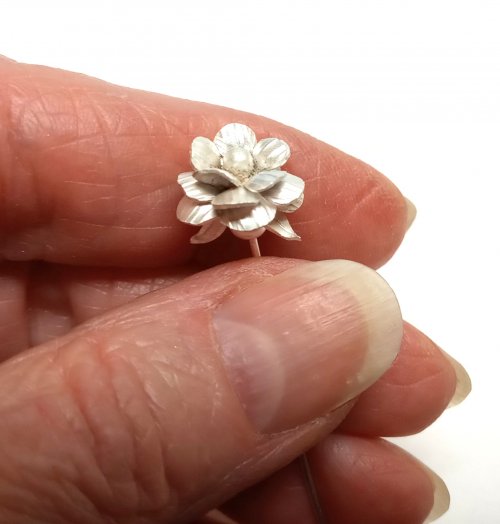 Creating a Flower Stem
Creating a Flower Stem
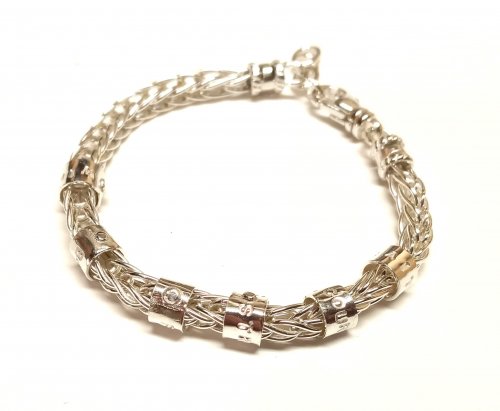 Stamped Tube Beads
Stamped Tube Beads
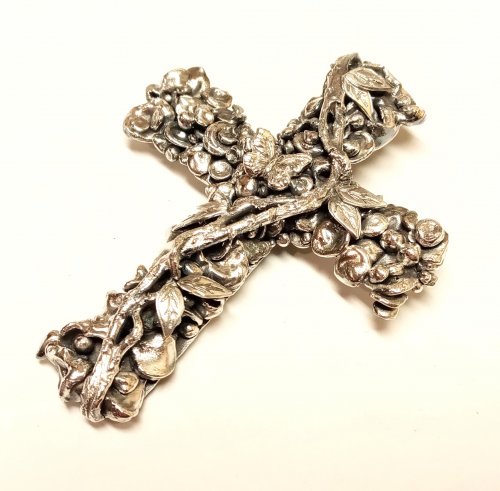 Water Cast Scrap Cross
Water Cast Scrap Cross
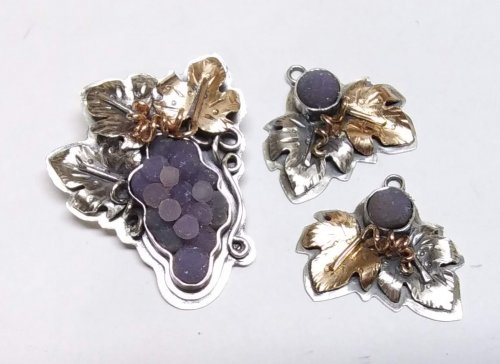 Sugared Grapes Pendant
Sugared Grapes Pendant
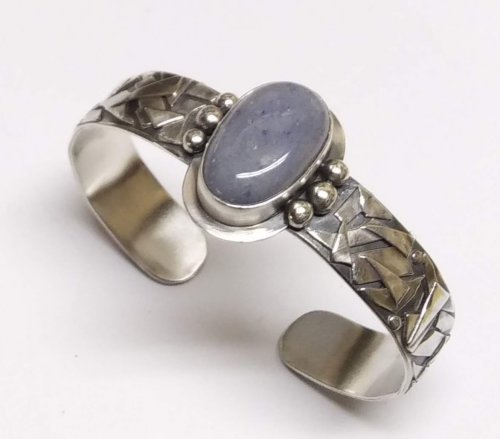 Tourist Rock Cuff Bracelet
Tourist Rock Cuff Bracelet
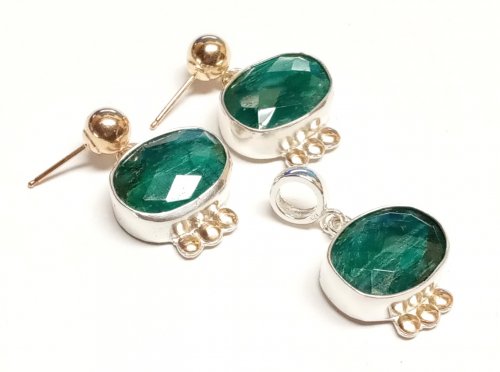 Gemstone Chains Reimagined
Gemstone Chains Reimagined
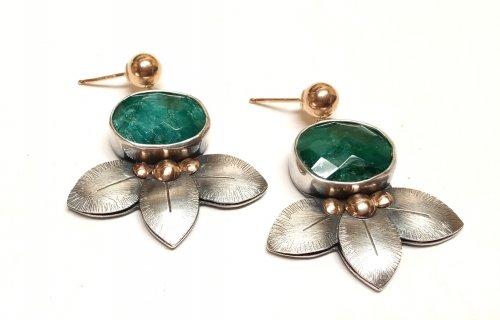 Checkerboard Faceted Earrings
Checkerboard Faceted Earrings
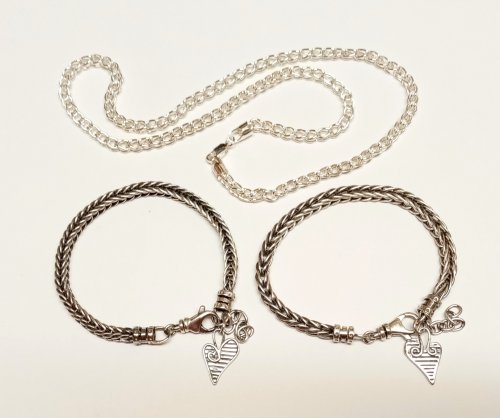 Foxtail Chain aka Loop-in-Loop
Foxtail Chain aka Loop-in-Loop
 Handmade Chunky Chain
Handmade Chunky Chain
 Capture a Summer Memory
Capture a Summer Memory
 Stone Key Fob
Stone Key Fob
 Sprinkles Link
Sprinkles Link
 Ball Chain Embellishments
Ball Chain Embellishments
 Handmade Ornament Hooks
Handmade Ornament Hooks
 Coin Focal
Coin Focal
 Branching Out
Branching Out
 Broken AKA Bits and Pieces Dish Jewelry
Broken AKA Bits and Pieces Dish Jewelry
 Easy No Solder Hinges
Easy No Solder Hinges
 Small Embellished Classic Cross
Small Embellished Classic Cross
 Closure Focal Necklace
Closure Focal Necklace
 Classic Cameo Pendant
Classic Cameo Pendant
 Bali Style Earrings
Bali Style Earrings
 Combine Druzy With Straw and Water Cast Components
Combine Druzy With Straw and Water Cast Components
 Feathers and Leaves Earring Remodel
Feathers and Leaves Earring Remodel
 Five Year Bracelet
Five Year Bracelet
 Designer Stick Earrings Remodel
Designer Stick Earrings Remodel
 Hammered Luxury
Hammered Luxury
 Recycled Black Pearl Earrings
Recycled Black Pearl Earrings
 Disc Cutter Earrings Remodel
Disc Cutter Earrings Remodel
 Show Your Colors Bracelet
Show Your Colors Bracelet
 CZ Explosion Necklace
CZ Explosion Necklace
 Domed Stud with Drop Loop
Domed Stud with Drop Loop
 Gemstone Stud Earrings With Hanging Loop
Gemstone Stud Earrings With Hanging Loop
 Split Bead Earrings
Split Bead Earrings
 Ripple Bracelet
Ripple Bracelet
 Double Foxtail Chain
Double Foxtail Chain
 Stretch Bracelets
Stretch Bracelets
 Copper Feather Earrings Remodel Into Cuff
Copper Feather Earrings Remodel Into Cuff
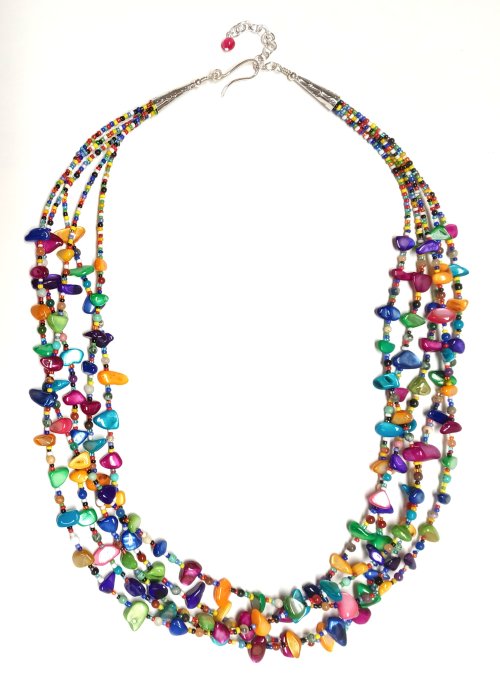 Summer Fun Necklace
Summer Fun Necklace
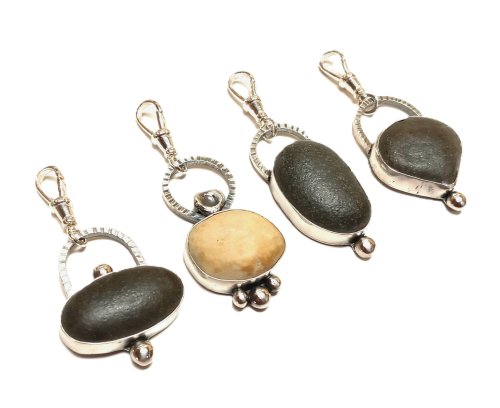 Reunion Key Fobs
Reunion Key Fobs
 Gnome Ornaments
Gnome Ornaments
 Happy Holly Days Ornament
Happy Holly Days Ornament

